Contract deal goes to union members
By Monica Stark Enterprise staff writer
Striking students have until Friday at 5 p.m. to vote on the tentative agreements between the United Auto Workers and the University of California. The “yes” and the “no” campaigns have been ramping up since Monday, when online voting began.
Under the tentative agreements, UC would provide minimum salary scales for Academic Student Employees, including Teaching Assistants and Graduate Student Researchers, as well as multiyear pay increases, paid dependent access to University health care, and enhanced paid family leave. If approved, the contracts will be effective through May 31, 2025.

“Our union’s membership is the highest decisionmaking body, and it is now up to all members to vote on this tentative agreement. We have engaged in an extensive democratic process up to this point, including open bargaining sessions and widelyattended bargaining caucuses,” said Rafael Jaime, President of UAW 2865.
“The progress we’ve made has been due to mass participation of membership, and it’s the membership who will decide on contract ratification.”
UC Davis Ph.D. candidate and bargaining team member Aarthi Sekar agrees: “We’ve been able to win through negotiations with UC, and if adopted, this contract will make UC so much more accessible to scholars from all backgrounds, not just to people with familial wealth. And you’ll see we’ll finally be able to support a diverse workforce,” she said.
As the week progresses, however, conversations between rank-and-file members are mounting, and not everyone will vote in favor of the tentative agreement. If the majority of the members vote no, the strike will continue.
UC Davis Physics grad student Spence Norwood describes the no-vote campaign as a “large grassroots movement” with “the benefits of people and energy on our side.”“Large swathes of the grad student community have been mobilizing to educate our
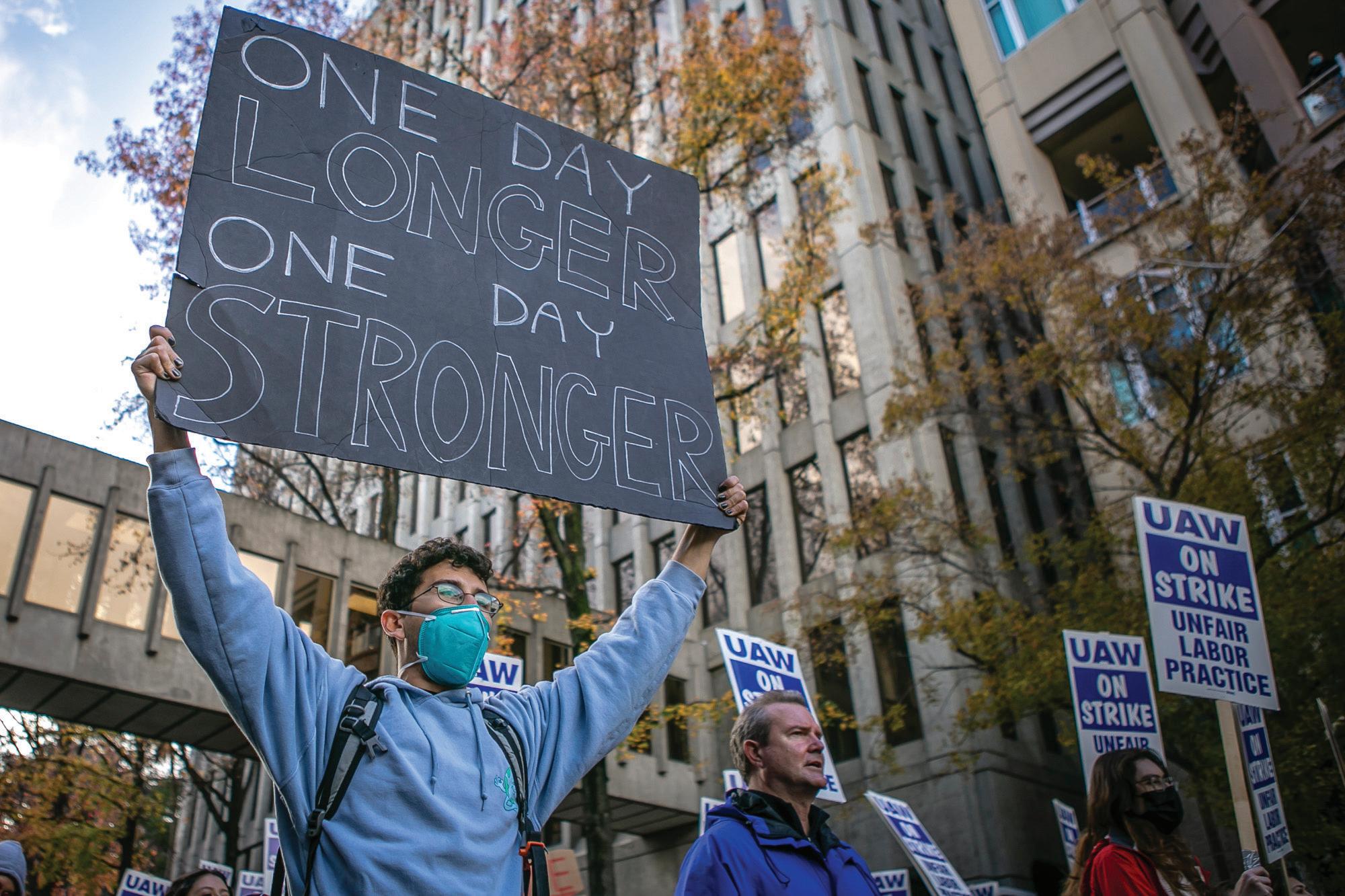
See CONTRACT, Page A4
Profs teach around UC strike
By Megan Tagami CalMatters
For UC Riverside student Amanda Soto, the drive to campus is a twoand-a-half hour round trip. But the commute didn’t stop her from attending the picket line more than five times in the last month of the fall quarter to support thousands of University of California academic workers on strike.
Soto, a fourth-year ethnic studies major, said she would have attended the strike of her own accord. But she is also a student of Dylan Rodríguez — a professor of media and cultural studies at UCR who seized the strike as a teaching opportunity.
Rodríguez encouraged his media studies class to visit him on the picket line, challenging students like Soto to consider how campus events tied into course themes of class
Grants available soon for nonprofits

 By Anne Ternus-Bellamy Enterprise staff writer
By Anne Ternus-Bellamy Enterprise staff writer
Davis expects to award up to $1.2 million to provide affordable housing and social services to lowand moderate-income Davis residents in the coming year thanks to the city’s’ share of federal funding.
The U.S. Department of Housing and Urban Development awards the Federal Community Development Block Grants and Housing Investment Partnerships program, and a portion is awarded by the city to local nonprofit organizations that deliver critically needed services such as meals, shelter, transportation, healthcare, elder care, mental health and home-
less services, and housing to low-income residents.

The city expects to receive approximately $780,000 in CDBG and $460,000 in HOME funds for fiscal year 2023-2024, although exact amounts will not be known for several months, until Congress appropriates funding for these grant programs, according to the city.
The funds can be used for affordable housing and other community development activities, for vital public service projects and for removal of architectural barriers.

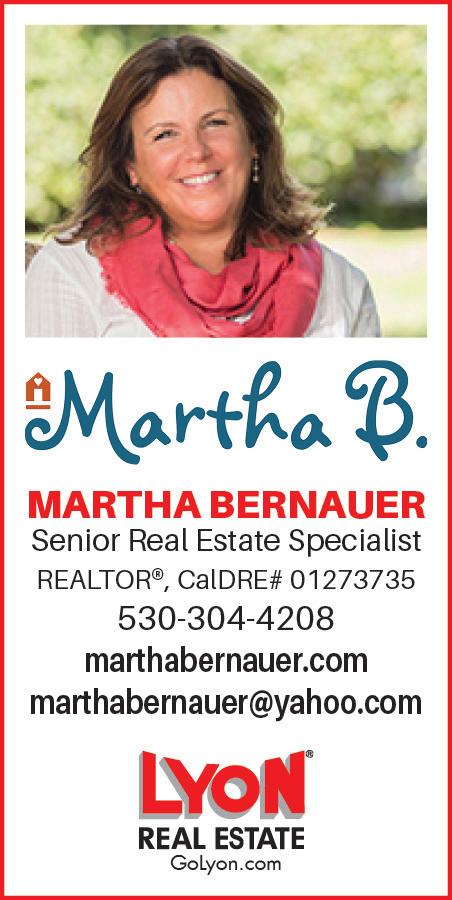
Some of the organizations that have received funding in the past include Yolo Hospice, Davis
Community Meals, the Short-Term Emergency Aid Committee, Meals on Wheels, Yolo County Children’s Alliance and Yolo Community Care Continuum. Only 15 percent of anticipated CDBG grant funds are available for public services. Funds are also spent to make public facilities, sidewalks, crosswalks and parks more accessible to those with disabilities and to develop or improve affordable housing.

An applicant workshop webinar will be hosted by the city on Tuesday, Jan. 10, at 10 a.m. via Zoom. The webinar link will be provided on the city’s website
and racial disparities.
“When being in solidarity with the strikers, we can also see the power structure that we see within a lot of the concepts and theories within the course,” Soto said.
The strike of approximately 48,000 academic workers represented by the United Auto Workers union has limited academic
Yolo DA settles Davis-area pesticide violation case
By Lauren Keene Enterprise staff writer
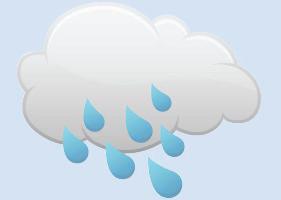

The Yolo County District Attorney’s Office announced Friday a settlement of pesticide-violation allegations against a Northern California farming operation.
A civil complaint filed against Heer Farms, its owners and other defendants in December 2021 alleged that the operation failed to follow certain safety laws and regulations while applying pesticides in the Davis area a year earlier.
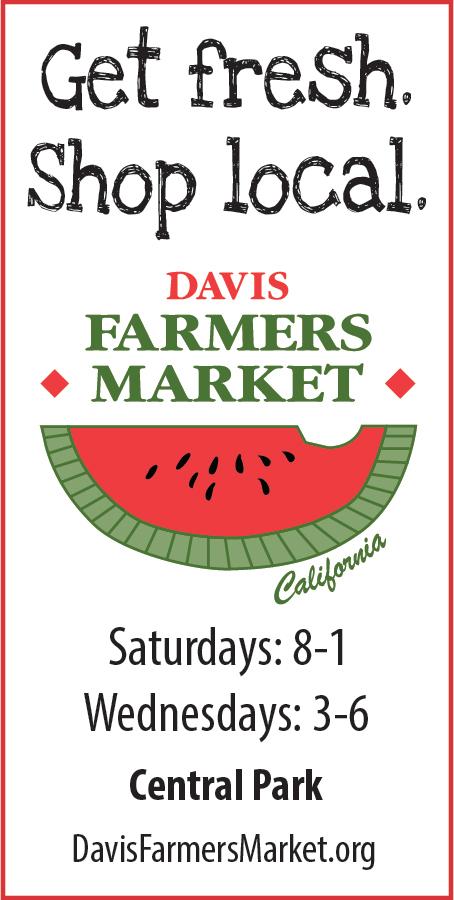
The Yolo County Agricultural Commissioner learned of the alleged
violations in January 2018, according to a District Attorney’s Office news release.
“Further investigation by District Attorney investigators revealed numerous additional violations of pesticide laws and regulations, including repeated failures by Heer Farms to submit timely pesticide use reports to the Ag Commission, as required by law,” the news release said.
A settlement agreement approved earlier this month by Yolo

INDEX HOW TO REACH US www.davisenterprise.com Main line: 530-756-0800 Circulation: 530-756-0826 http://facebook.com/ TheDavisEnterpriseNewspaper http://twitter.com/D_Enterprise VOL. 124 NO. 153 Today: Rain. High 60. Low 44. More, Page B12 WEATHER Business Focus B8 Classifieds A6 Death Notice A3 Forum B3 Gift Guide B4 Living B6 Sports B1 The Wary I A2 Worship Page A4 WED • FRI • $1 en erprise WEDNESDAY, DECEMBER 21, 2022 THE DAVISt
Rahul lal/CalMatteRs photo
Dennis Susan (left), a graduate student instructor at UC Berkeley, marches with UC workers through downtown Sacramento on Dec. 5.
See
TEACH, Back page
See GRANTS, Page A2
See pesticid, Page A2
So, all money is not created equal
As complaints continue to pour in from folks who wonder why they have yet to receive their “Middle Class Tax Refund” from the State of California, I have decided a full-scale investigation is in order, and who better to conduct it than the Above-Pictured Columnist?
If you have already received your refund or believe you don’t have one coming because you are only visiting the Golden State, you can go back to whatever you were doing before Davis’ Only Local Newspaper landed on your driveway.
For everyone else, I have some valuable information.
According to the state, always looking out for our best interests, “The Middle Class Tax Refund is a one-time payment to provide relief to Californians. If you are eligible, you will automatically receive a payment. Payments are expected to be issued between October 2022 and January 2023.”
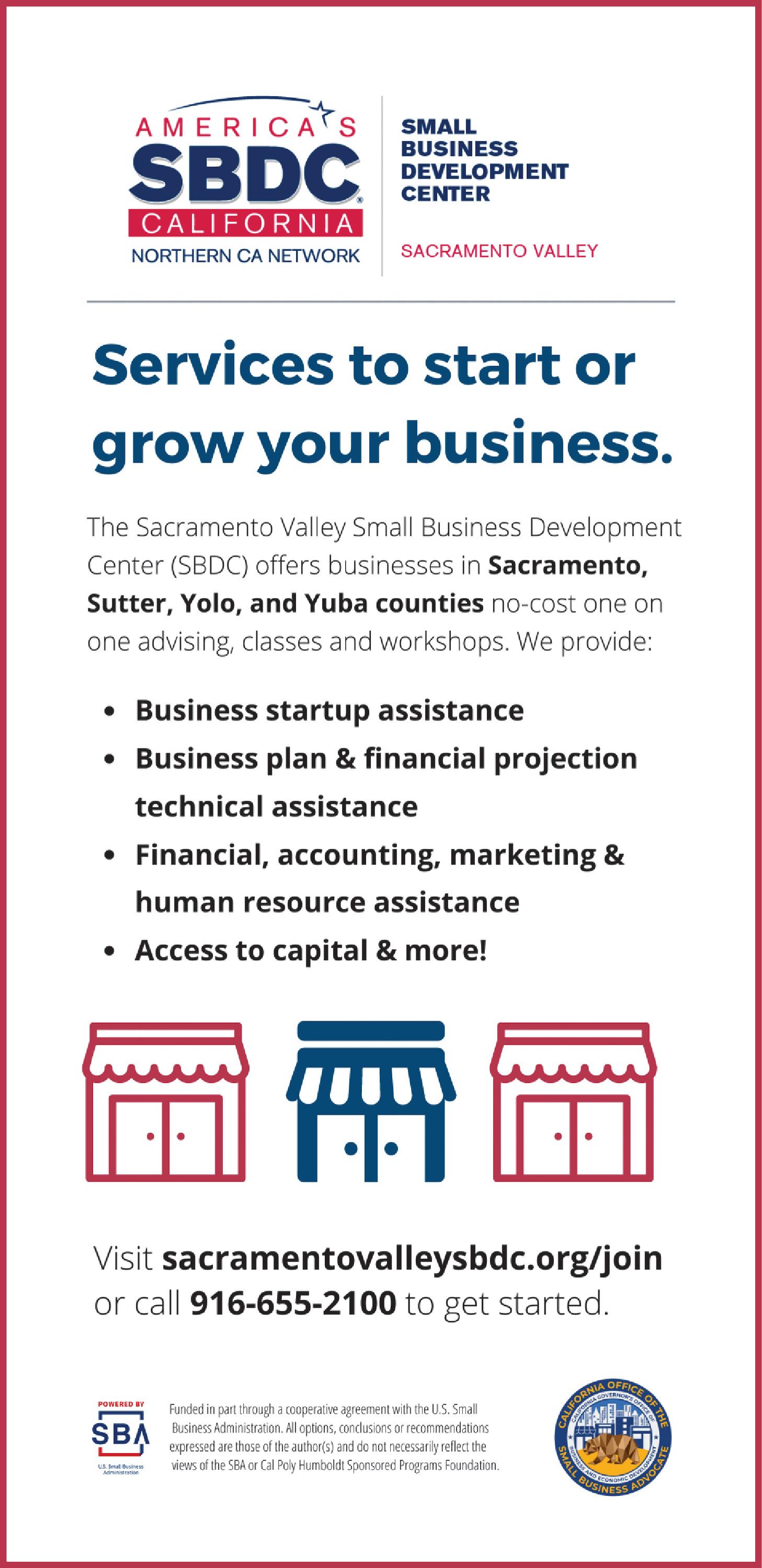

In other words, just in time for Halloween for some and much too late for Christmas for others. Why the state doesn;t just issue them all at the same time in the same manner is not explained. Why not just say “On January 1 we will mail a check to every eligible
Californian.” Period. No questions asked. No guesswork. No mystery.
Because of the uncertainty about when people will be paid and how much and in what form, local therapists are reporting an increase in what they term “mail anxiety,” which is caused by extreme excitement as the mail carrier approaches and extreme disappointment when all that is received is an extremely bloated PG&E bill and a $1-off coupon for your next car wash in Medford.
If you’re sitting down, I’ll let you know that households with an adjusted gross income of $500,000 are eligible for the Middle Class Tax Refund, giving new meaning to the term “middle class.” I am not making this up. Folks in the $500,000 tier can either send the butler to pick up their refund in person or have it
PESTICIDE: Ag firm agrees to $25K fine
From Page A1
Superior Court Judge Samuel McAdam calls for Heer Farms to pay $25,000 in civil penalties and costs, as well as obey all relevant statewide laws.
The agreement also requires Heer Farms to provide advance notice of future pesticide use to Davis residents who live near the illegal 2017 application area.
Additional information about the case, including copies of the civil complaint and final judgment, can be viewed at yoloda. org/heer-farms-agrees-to-
settle-case-regardingpesticide-violations-indavis/.

In a statement, District Attorney Jeff Reisig said his office “is committed to protecting public health and the environment when pesticides are applied to agricultural lands.”
“It is of paramount importance that pesticides be applied in a manner that ensures the safety of employees and the public,” Reisig said. “We thank the Yolo County Agricultural Commissioner for the department’s hard work and assistance in this matter.”
mailed directly to their condo in Aspen.
They are eligible for this refund even if they have no dependents.
You should know there is a caste system of sorts as to how and when this windfall will be distributed to the good citizens of the state we all know and love.
Some folks will have the money deposited directly into their bank accounts to do with as they please. Others will receive debit cards in the mail from an out-of-state outfit that dictates how and where the cards may be used. Trust me, they are not the same as cash, but the state seems to have absolutely no problem with treating some of us as second-class citizens.
Money in the bank is money in the bank. It’s there even if you don’t know it is. No restrictions of any kind on its use.
The debit cards will arrive in the mail from an outfit in Omaha, which means half the recipients will mistake it for junk mail and toss it without even bothering to see what’s inside. Others will lose the card long before exhausting the funds and not be able to navigate the red tape to get a new card. Such problems do not exist with
direct deposit.
The state is warning people to be on the alert for scams dealing with the Middle Class Tax Refund. However, when you receive an envelope in the mail that has a return address of Omaha but alleges to have something to do with this refund, the word “scam” will be the first thing on your mind.
Instead of sending me a debit card with restrictions, I’d rather the state of California send me 100 fully negotiable coupons each good for two toppings at Yolo Berry. Or maybe 50 coupons each good for a double-double at In-NOut.
The architect of this nonsense, Gov. Gavin Newsom, who is paid less than $500,000 a year to run this state, should receive a coupon good for one meal, with tip, at his favorite restaurant in Yountville.
When you will receive your debit card depends entirely on what letter your last name begins with, just like how we lined up in kindergarten at West Davis Elementary to say the Pledge of Allegiance.
There is a better way, but the state has declined to pursue it.
— Reach Bob Dunning at |bdunning@davisenterprise.net.


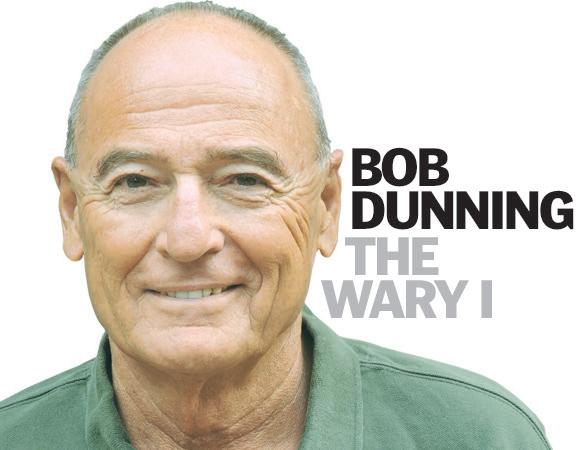
GRANTS: Applications due Jan. 24


From Page A1
in the Spotlight section found on the left-hand side of the homepage at https://www.cityofdavis.org. All applicants are strongly encouraged to attend this workshop, which is expected to last approximately an hour.
Grant applications are due to the city on Jan. 24 by 5 p.m., via email to tcovell@cityofdavis.org. The city’s Social Services Commission will recommend funding amounts in March, and then in
April, the City Council is expected to decide which groups will receive grants. Applications can be downloaded from the city’s website by clicking the “CDBG/ HOME Programs” link at https://www. cityofdavis.org
For more information, contact Tara Covell, grants management analyst, in the city manager’s office at 530-7575623.
— Reach Anne Ternus-Bellamy at aternus@davisenterprise.net. Follow her on Twitter at @ATernusBellamy.
Please send correspondence to The Davis Enterprise P.O. Box 1470 Davis, CA 95617-1470
ADDRESS Local
MAILING
PHONE, MAIL OR IN PERSON Home delivery: 325 G St., 530-756-0826 Delivery phone hours : Mon.-Fri. 9 a.m.-1 p.m.; Sun. 7-10 a.m. Business office : 325 G St. 530-756-0800 Hours: Mon. - Fri. 9 a.m. - 4 p.m. EMAIL News newsroom@davisenterprise.net Sports sports@davisenterprise.net Home Delivery circulation@davisenterprise.net Classifieds classads@davisenterprise.net Advertising ads@davisenterprise.net Legal Notices legals@davisenterprise.net Obituaries obit@davisenterprise.net Production graphics@davisenterprise.net ON THE WEB www.davisenterprise.com Copyright 2022 If you do not receive your Enterprise by 5 p.m. on Wednesdays or Fridays or 7 a.m. on Sundays, please call 530-7560826. Missed issues will be delivered on the next publishing day. HOME DELIVERY HOW TO REACH US About us 2022 Member California News Publishers Association Certified Audit of Circulations A2 THE DAVIS ENTERPRISE WEDNESDAY, DECEMBER 21, 2022 The Davis Enterprise is published Wednesdays, Fridays and Sundays by The Davis Enterprise Inc., 315 G Street, Davis, CA 95616. Application to Mail at Periodicals Postage Prices is Pending at Davis, CA. POSTMASTER: Send address changes to to The Davis Enterprise, P.O. Box 1470,
CA
Phone
Burt McNaughton Publisher Sebastian Oñate Editor Nancy Hannell Advertising Director Shawn Collins Production Manager Bob Franks Home Delivery Manager SUBSCRIPTION RATES FOR CARRIER DELIVERY (plus tax) Home delivery $3.69 per week Online $3.23 per week 12 weeks $44.84 24 weeks $89.30 48 weeks $159.79
Davis,
95617-1470.
530-756-0800 R.
Briefly
Cops seek driver in hit-and-run
Davis police are seeking the driver in a hitand-run collision that injured a bicyclist last Thursday.
Lt. John Evans said the 25-year-old victim was riding westbound on Caribou Place across Quail Street at about 11:45 a.m. when the driver of a sport-utility vehicle “sped northbound on Quail, collided with the bicyclist and fled the scene without stopping to help.”
The victim was transported to the UC Davis Medical Center for treatment of scrapes and abrasions she suffered in the crash, according to Evans. He described the driver’s vehicle as a smaller, white SUV that likely sustained frontend damage, including shattered glass and a broken license-plate frame.
Officers checked the area for the suspect vehicle, possible witnesses and security video from homes in the neighborhood but came away empty-handed, Evans said.
Anyone with information about this incident is urged to call the Davis Police Department at 530-747-5400.
Farmers Market holiday hours
The Davis Farmers Market will be open regular hours every Saturday during the holidays, including Christmas Eve and New Year’s Eve. It will be closed on Wednesday, Dec. 28.
The Saturday market is bustling this time of year, with local crafters, holiday music and carolers. Along with abundant produce, there are preserves, honey, vinegars, olive oils, nuts and nut butters, granola, baked goods, dried fruits, chocolate candies and local wine.
Other items include handmade soaps and lotions, flowers (including poinsettias) and market-logo merchandise. Shoppers can enjoy coffee and hot food while they shop for the perfect items to fill personalized gift baskets.
In fact, the market’s Gift Basket Central, near the Market Shed, offers free baskets and wrapping of market items on Saturdays. The service is available to anyone who purchases three or more items at the Davis Farmers Market, at 301 C St. in Central Park.
The Davis Farmers Market is open from 8 a.m. to 1 p.m. on Saturdays. Wednesday hours are 3 to 6 p.m. November through March, and 3 to 7 p.m. April through October.
For more information, visit https//davisfarmers market.org or visit it on Facebook or Instagram.
Co-op Holiday Meal returns
The Davis Food Co-op invites everyone to join, or support, its 37th annual Holiday Meal from 5 to 7 p.m. Saturday, Dec. 24, at the Veterans Memorial Center, 203 E 14th St. in Davis.
This free and festive dinner for the entire
community is a remarkable Davis tradition and has become an important part of the holiday celebrations of local people from all walks of life.
This year’s meal will be available both as a dinein and take-out option and is open for anyone to attend free of charge. This is the first time since 2019 that the meal is being offered with a dine-in option and it is expected to feed anywhere between 400 to 700 people.
In addition to a warm meal, clothing and toiletries donated from the community will also be available for those in need. Any food leftover at the end of the night will be donated to local organizations that feed people facing food insecurity.
This event succeeds only because a broad spectrum of people support it through donations and volunteering.
The Co-op has received generous donations from Meals on Wheels Yolo County, the city of Davis, NorCal Produce, United Natural Foods and Upper Crust Baking.
There are also opportunities for individuals to volunteer or donate to help cover the operations and cost of the event.
Find more information at https://davisfood. coop/.
Grants for breast cancer patients
Thriving Pink’s annual Granting Pink program provides financial grants of up to $1,500 to help the Yolo County breast cancer community with immediate and direct needs.
The grant application period is from Dec. 1 to Jan. 31. Anyone diagnosed with breast cancer who lives in Yolo County and has not received a prior grant from Thriving Pink can apply by filling out the application.
Applications and more information are available on our website in both English and Spanish.
Thriving Pink is a Yolo County nonprofit dedicated to helping those impacted by breast cancer.
Please go to www. thrivingpink.org for applications and more information.
Embroiderers Zoom meeting
The Valley Oak Chapter of the Embroiderer’s Guild of America will host a Zoom presentation by Dolores Andrew at 11 a.m. Wednesday, Jan. 4.
Andrew is an artist and designer in the needlework disciplines.
Among many other accomplishments, she is a certified National Academy of Needlearts Master Teacher of embroidery.
In her presentation, she will explore the role of samplers in women’s lives through our history.
To attend, contact Linda Wayne at laws999@gmail.com by Dec. 30 to be added to the Zoom list.


We need more than good will
Special to The Enterprise
Dear Readers, the guest column below was written by Richard McCann, a Davis resident and expert on energy and climate action plans.
The city of Davis is considering its first update of its Climate Action and Adaptation Plan since 2010 with a 2020-2040 Plan. The city plans to update the CAAP every couple of years to reflect changing conditions, technologies, financing options, laws and regulations.
The plan does not and cannot achieve a total reduction in greenhouse gas emissions simply because we do not control all of the emission sources — almost three-quarters of our emissions are from vehicles that are largely regulated by state and federal laws. But it does lay out a means to putting a serious dent in the overall amount.
The CAAP offers a promising future and accepts that we have to protect ourselves as the climate worsens. Among the many benefits we can look forward to are avoiding volatile gas prices while driving cleaner, quieter cars; faster and more controllable cooking while eliminating toxic indoor air; and air conditioning and heating without having to make two investments while paying less.
To better adapt, we’ll have a greener landscape, filtered air for rental homes, and community shelter hubs powered by microgrids to ride out more frequent extreme weather.
We have already seen
that adding solar panels raises the value of a house by as much as $4,000 per installed kilowatt (so a 5 kilowatt system adds $20,000). We can expect similar increases in home values with these new technologies due to the future savings, safety and convenience.
Several state and federal laws and rules foretell what is coming. By 2045 California aims to be at zero net GHG emissions. That will require retiring all of the residential and commercial gas distribution lines. PG&E has already started a program to phase out its lines. A change in state rules will remove from the market several large natural gas appliances such as furnaces by 2030.
In addition, PG&E will no longer offer subsidies to developers to install gas lines to new homes starting next year. The U.S. Environmental Protection Agency appears poised to push further the use of electric appliances in areas with poor air quality such the Sacramento Valley. (Renewable gas and hydrogen will be too expensive and there won’t be enough to go around.)
Without sales to new customers or for replaced furnaces, the cost of maintaining the gas system will rise substantially so switching to electricity for
cooking and water heating will save even more money. The CAAP anticipates this transition by having residents begin switching earlier.
In addition, the recently enacted federal Inflation Reduction Act offers between $400 and $800 billion into funding these types of changes. The California Energy Commission’s budget for this year went from $1 billion to $10 billion to finance these transitions. The CAAP lays out a process for acquiring these financial sources for Davis and its residents.
That said, some have objected to the CAAP as being too draconian and infringing on personal choices. The fact is that we are now in the midst of a climate emergency — the City Council endorsed this concern with a declaration in 2019. We’re already behind schedule to head off the worst of the threatening impacts.
We won’t be able to rely solely on voluntary actions to achieve the reductions we need. That the CAAP has to include these actions proves that people have not been acting on their own despite a decade of cajoling since the last CAAP. While we’ve been successful at encouraging voluntary compliance with easy tasks like recycling, we’ve used mandatory permitting requirements to gain compliance with various building standards including energy efficiency measures. (These are usually enforced at point-of-
sale of a house.)
We have a choice of mandatory ordinances, incentives through taxes or fees, and subsidies from grants and funds — voluntary just won’t deliver what’s needed. We might be able to financially help those least able to afford changing stoves, heaters or cars, but those funds will be limited. The ability to raise taxes or fees is restricted due to various provisions in the state’s constitution. So we are left with mandatory measures, applied at the most opportune moments.
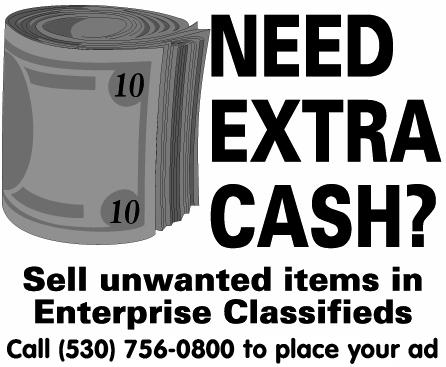
Switching to electricity for cooking and water heating may involve some costs, some or most of which will be offset by lower energy costs (especially as gas rates go up.) If you have an air conditioner, you’re likely already set up for a heat pump to replace your furnace — it’s a simple swap. Even so, you can avoid some costs by using a 120-volt induction cooktop instead of 240 volts, and installing a circuit-sharing plug or breaker for large loads to avoid panel upgrades.
The CAAP will be fleshed out and evolve for at least the next decade. Change is coming and will be inevitable given the dire situation. But this change gives us opportunities to clean our environment and make our city more livable.
— John Mott-Smith is a resident of Davis. This column appears the first and third Wednesday of each month. Please send comments to johnmottsmith@ comcast.net

Phone scammers back in action
By Lauren Keene Enterprise staff writer
Phone scammers are at it again, this time posing as government officials to collect or extort money from their victims, according to a recent warning from the U.S. Attorney’s Office.
The callers claim to be attorneys or law-enforcement officers to add credibility to their schemes, going so far as to “spoof” — or falsify data — to make it appear as though the call is coming from a legitimate government office.
Scammers frequently target the elderly, threatening to show up at their victims’ homes if they don’t pay for outstanding legal fees, according to Lauren Horwood, public affairs officer for the U.S. Attorney’s Office in Sacramento.
“The U.S. Attorney’s
Office will never call members of the public and threaten to arrest them and demand payment of unspecified ‘legal fees,’ ” Horwood said.
“We encourage members of the public to be alert for potential phone scams against themselves and their family members.”
Authorities urge phonescam victims to look for the following warning signs: n eing told you have won a prize or sweepstakes, and need to send money for taxes and insurance in order to receive the winnings.
n Being asked to provide or to confirm your Social Security number, bank account or credit-card numbers, or other personal information, such as addresses and dates of birth.
n Use of scare tactics,
such as claiming a loved one is in danger, or that you risk being arrested if you do not take immediate action.
n Asking for payment with money transfers, cryptocurrency or gift cards.
n Pressure to act immediately.
n Promises to recover money you have lost in other scams, for a fee.
n Demands that taxes be paid without giving taxpayers the opportunity to question or appeal the amount owed.
Anyone who has received calls like this is urged to report them to the Federal Trade Commission online at reportfraud.ftc.gov, or by calling 877–FTC–HELP (877-382-4357).
The FBI also accepts fraud reports for possible law-enforcement action at www.justice.gov/criminalfraud/report-fraud.
Learn to write memoirs Death notice
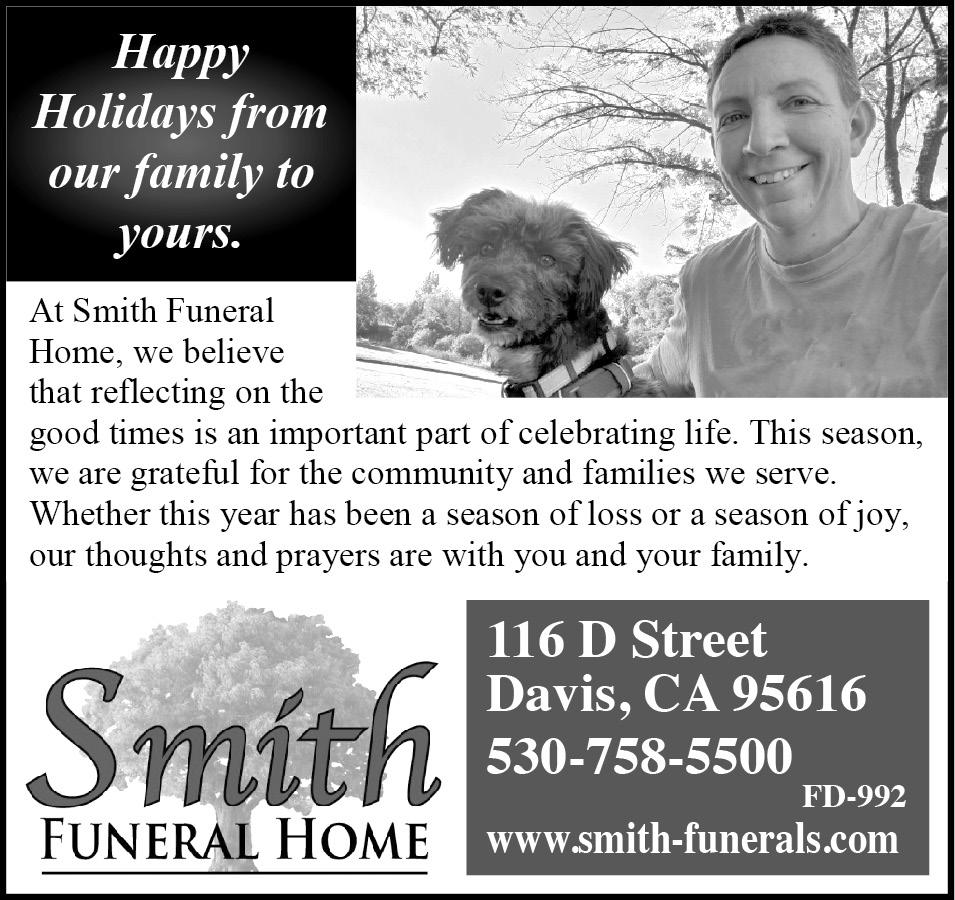
Special to The Enterprise
The Davis Senior Center will host a class on memoir-writing beginning on Jan. 10.
Adults are welcome to participate. The focus of the group will be capturing the story rather than developing writing skills, though participants may choose to do both.
The six-week session runs Tuesdays, 9 to 11 a.m., Jan. 10 through Feb. 14. The cost is $75 and scholarships are available. The
Senior Center is at 646 A St. To register or learn more about this program, stop by, go online to www. cityofdavis.org or call the center at 530-757-5696.
Send questions to Maria Lucchesi, Community Services Supervisor at mlucchesi@cityofdavis. org or 530-757-5696.
Special to The Enterprise
Dorothy Fay Wallace died Tuesday, Nov. 22, 2022, in Dixon. A rancher and farmer, she was 101. A full obituary and notice of a memorial service will be announced soon.
Horwood
n Never trust the caller ID number, since the displayed telephone number can be manipulated with software (“spoofing”).
n Always consider sending unsolicited phone calls to voicemail. Many scamcall centers will not leave a message.
n Never click on links contained in unsolicited emails or text messages. The links may route you to fake websites or deploy malicious software.
n Protect your personal and financial information and never provide it in response to unsolicited text messages, emails or social media posts claiming to be from a government agency.
THE DAVIS ENTERPRISE WEDNESDAY, DECEMBER 21, 2022 A3 Local
also offered the following tips for avoiding phone-scam fraud:
CONTRACT: ‘Yes,’ ‘no’ votes work to line up supporters
coworkers, to tell them about the deficiencies in our contract, and the ways we can continue to fight and win something better,” he said.
Wages
According to UC, by Oct. 1, 2024, the first step on the new, six-point Graduate Student Researcher salary scale will be set at $34,564.50 for 50-percent time work. By Oct. 1, 2024, the minimum nine-month salary for Teaching Assistants will be $34,000 for 50-percent time work.
By Oct. 1, 2024, the minimum salary rate for Berkeley, San Francisco, and UCLA will be $36,500.
UC will proportionally increase the Associate Instructor and Teaching Fellow rates for Oct. 1, 2024, to correspond to the additional increases provided for Teaching Assistants.
Jaime explained that when the parties began bargaining, the union called for $54,000 for 12 months, and $34,000 for nine months.
“We won more in this contract than any group of unionized higher education workers ever has ever won before. And obviously, there’s more to win, but you know, this contract puts us in a really strong position to keep
making improvements and two and a half years,” he said.
Sekar said the results in this contract would help address the high cost of living in California with some workers seeing raises up to 80%: For TAs, the raise increase is 55% to 80% over two years; for student researchers, it’s 25% to 80%. “So that in and of itself is going to go a long way in addressing the high cost of living,” she said.
Norwood said that while the percent increase looks good by itself, when combined with the “tiny” base salary they receive, it’s still far below a living wage. “We would still be classified as very low income in Yolo County after ratification, and we only reach $34,000 by the end of the contract, in 2024. Inflation will be devaluing these raises as time passes, as well.”
Averaged over the duration of the contract, and assuming twobedroom shared housing with 12 months of pay, graduate students Arsalan Adil, UCD Physics & Astronomy, and Patrick Lawton, UC Riverside Biophysics, predict that eight out of 10 campuses will be rent-burdened, two of which they assume will be severely rentburdened. By the end of the contract, they predict that seven campuses will continue to be rent-burdened.
By the end of the contract, Adil
and Lawton estimate that the wage increase may be as low as 26% (UCD, UCR) relative to current wages and 10% (UC Santa Cruz) relative to 2018, after adjusting for inflation and rental price increases.
Compared to 2018, four campuses (UCD, UC Merced, UCR, UCSC) will have a higher rent burden for the entire duration of the contract. According to their calculations, two more (UC Santa Barbara, UC San Diego) will see their rent burden decrease by less than 5 percent.
Disability rules
According to the UAW, the previous contract for ASEs requires UC to implement needed disability accommodations. These requirements include: engaging in an interactive process that mandates worker input to get the accommodations the worker wants, rather than allowing the UC to unilaterally determine the accommodations, and allowing workers to enforce the contract through the grievance process if accommodations are not provided or if the interactive process is not fair.
Under the tentative agreements, workers will be able to receive accommodations immediately when they are needed. Medical documentation is not
required for interim measures.
Also, according to UAW, the UC must notify workers of their accessibility rights in their appointment letter.
It allows for establishing a joint committee to identify campus best practices for funding workers’ access needs. ASEs and SRs would earn eight weeks of fullypaid medical leave.
In its most basic form, Norwood called these access needs an attempt to give disabled workers equitable access to their workplace and the resources necessary to perform their job. “This article was to enshrine this into our contract and remove existing barriers to access, barriers not required by the Americans with Disabilities Act, but that the University requires anyway. As it stands currently, this has been removed from the tentative agreement and replaced with a far inferior version,” he said.
Norwood said workers from the no-vote side have tried to communicate with their bargaining teams, with the leadership and staffers, that the contract isn’t sufficient, that more is needed to survive. “It hasn’t changed their path, though,” he said.
He said this grassroots push is essential, as they are “challenged by the union apparatus itself,” using union resources to push for
a “yes” vote. “Contacts are being used for phone banking campaigns, and official communication channels are being locked and renamed to things pushing for a yes vote. They even hired a PR firm, Brightline Communications, to help push this yes vote through. They have money and structural power, so we have to give everything we can to even the playing field. Despite that, I’m confident we will surpass them, we have the momentum behind us, and we’ve been setting this up for weeks. We are all ready to build a new contract,” he said.
While Norwood feels let down by union leadership for not listening to their constituents, he said what didn’t let them down is the union. “The union is not the leadership; it’s not the paid staffers. It’s every worker in the UC. Every member of the rank and file is the union, people working together in solidarity for a better future.
“As we push to Vote No and signal a change in our direction, we see the strength of our organization. The acts of compassion that I’ve seen, of love, and of tireless effort in the journey for better conditions have been inspiring. The union isn’t quitting, it’s just starting, and I am immensely proud to be a member of it.”
— Contact Monica Stark at monica@davisenterprise.net.
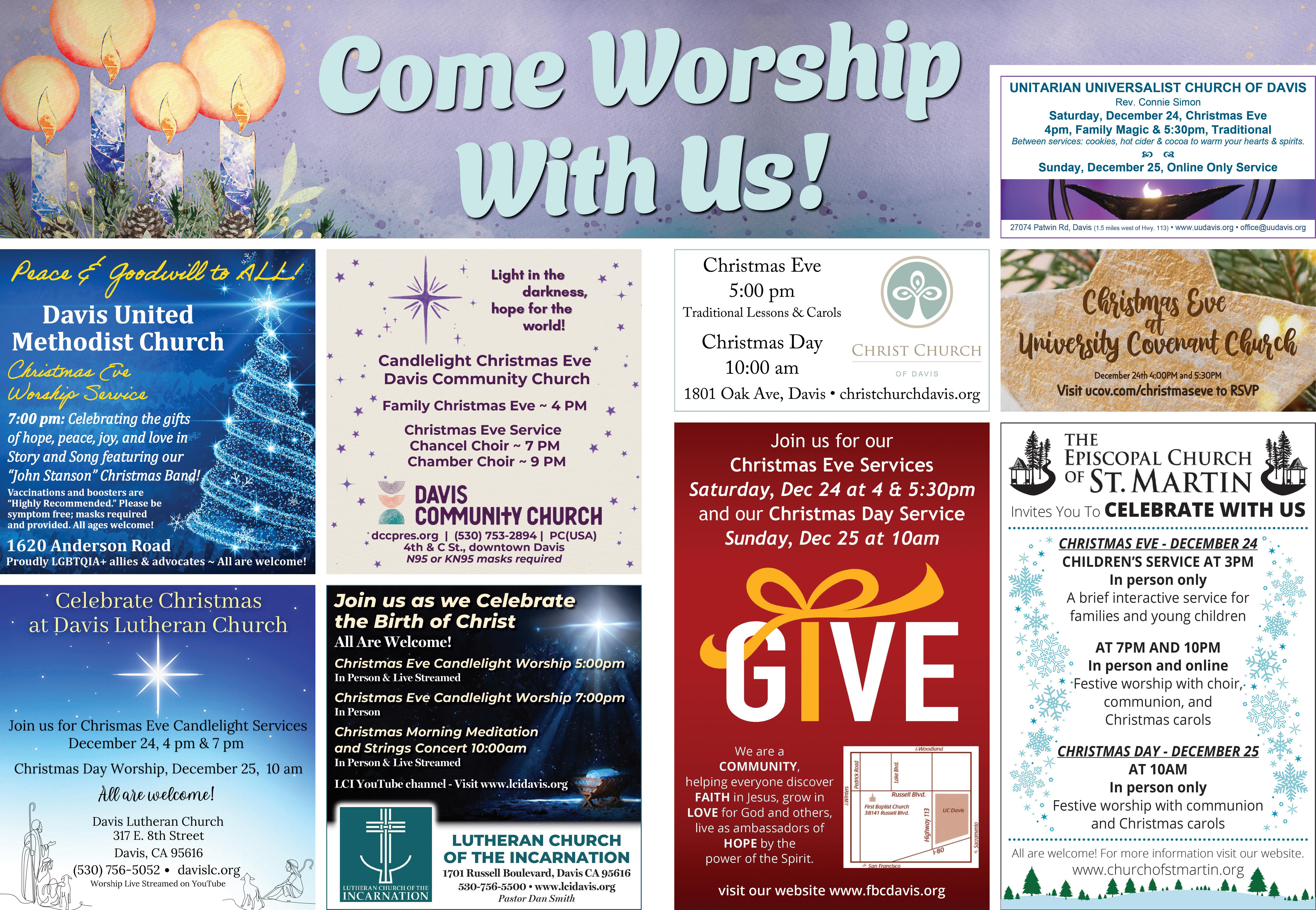
UCD student shines a light on cold-adapted butterfly
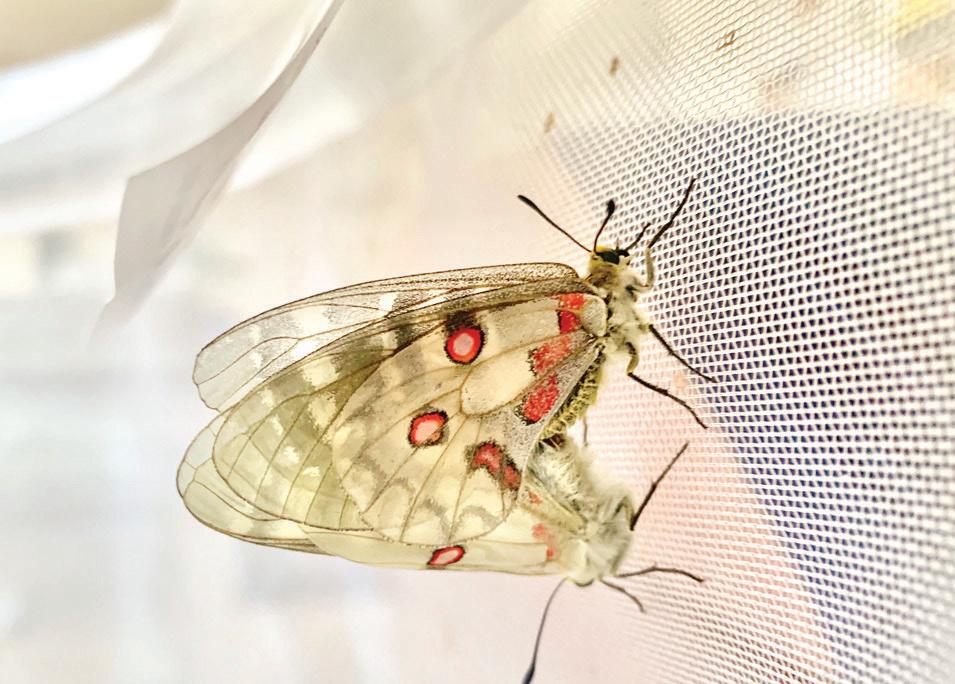 By Kathy Keatley Garvey Special to The Enterprise
By Kathy Keatley Garvey Special to The Enterprise
The cold-adapted Parnassian butterflies don’t get nearly as much attention as the iconic monarchs that migrate to overwintering spots, but a UC Davis entomology student’s research may help change all that.
Gary Ge, a member of the UC Davis Research Scholars Program in Insect Biology (RSPIB) who studies with Professor Louie Yang of the Department of Entomology and Nematology and UC Davis Distinguished Professor Art Shapiro of the Department of Evolution and Ecology, is using the American Apollo butterfly (Parnassius clodius) as a model to study how microclimatic conditions affect cold-adapted insects.
P. clodius, a white butterfly, is found at high elevations in western United States (Washington, Oregon, Nevada and Canada) and in British Columbia, Canada.
“Parnassians are a group of cold-adapted Northern Hemisphere butterflies that are becoming increasingly important as objects
of physiological, ecological and evolutionary study,” said Shapiro, who has monitored butterfly populations across central California for the last 50 years.
“They are only likely to grow more important in the context of climate change. Thus, Gary’s study is very timely and should attract plenty of attention! It is demanding given the rigorous conditions in which they breed and develop, and he is likely to learn a lot that will facilitate future lab and field studies.”
Yang, who researches monarch butterflies and milkweed phenology, said: “Gary is a remarkable student with an excellent understanding of the butterflies he is studying. Over the years, he has applied his longstanding enthusiasm for these butterflies to ask insightful questions about the thermal ecology of cold-adapted organisms under global warming. Gary has also demonstrated the determination and resilience required to overcome unexpected barriers and to see his research through to completion. He is a skilled and thoughtful
scientist with the ability to make valuable contributions to ecology, and I’ve been happy to have had a chance to work with him.”
Ge just finished writing a National Science Foundation’s Graduate Research Fellowship Program (GRFP) grant proposal. He anticipates receiving his bachelor of science degree from UC Davis in 2023.
“For the proposed GRFP project, I am using the American Apollo butterfly (Parnassius clodius) as a model to study how microclimatic conditions affect cold-adapted insects,” he
explained. “Right now, I am testing the first hypothesis with Louie and trying to make it an independent project that I can get published next year. I hypothesize that mid-elevation populations of P. clodius have the best cold tolerance as overwintering eggs. The main factor behind this is snow cover. Snow cover is known to provide significant insulation to whatever is underneath, usually creating higher microclimatic temperatures under the snow than above.”
Ge traces his interest in insects to “a pretty young
age. I can’t say certainly what sparked my passion for them, but if I have to say one it was when I first brought some Xuthus swallowtail (Papilio xuthus) caterpillars to adults. At some point during elementary school, I found several Xuthus larvae on my backyard Zanthozylum tree, brought them back indoors, fed them and got to see them pupate and turn into butterflies. It is cliché but nonetheless true for me! From then on, I just kept noticing more and more of these amazing creatures around me. I have always loved to rear and breed insects instead of just collecting them, which set the foundation for my passion in insect ecology.”
The genus Zanthozylum belongs to the Rutaceae family, commonly known as the rue or citrus family of flowering plants.
Ge, born in Beijing, attended elementary school in New York, middle school in Singapore, and high school in Hawaii, and now California for college. “This allowed me to have experience with a range of lepidopterans and ants and termites as well — social
insects are my other favorite group.”
He developed his passion for Parnassius during middle school. “When I was visiting my extended family in Tibet, I saw this small white butterfly flying through the seemingly lifeless alpine scree habitat at an elevation of around 1,5000 feet. I later found out that it was a Parnassius species and got immediately intrigued by the fact that they are mostly specialist of alpine and arctic habitats, living in some of the world’s coldest and most hostile environments.”
At UC Davis, Ge serves as a research assistant with Professor Art Shapiro’s Central California Butterfly Population and Diversity Trends Study. He works with Yang as a project manager and a research assistant on his Milkweed Phenology Study.
As a prospective graduate student at UC Davis, Ge hopes to engage in outreach opportunities. One would be to set up an entomology exhibit at Briggs Hall during the UC Davis Picnic Day, which draws some 75,000 visitors to the campus.
THE DAVIS ENTERPRISE WEDNESDAY, DECEMBER 21, 2022 A5 Local
From Page A4 THE DAVIS ENTERPRISE WEDNESDAY, DECEMBER 21, 2022
Gary Ge/Courtesy photo American apollo butterflies, mating. They are from a hybrid strain that UC Davis student Gary Ge maintains at home.
From Page A1
Saturdayn The annual Davis model train display will be up and running at the Davis train station (Amtrak) at 840 Second St. in downtown Davis. Sponsored by the Davis Sunrise Rotary Club (davisrotary.org) and the Davis Model Train Club, admission is free. Any donations received will be directed to local charitable programs. The electric train display will be open from 10 a.m. to 12:30 p.m. and features two layouts (Lionel O and HO gauges) with interactive components for children as well as examples and history of local Davis points of interest.
n The Davis Food Co-op invites everyone to join, or support, its 37th annual free Holiday Meal at the Veterans Memorial Center, 203 E 14th St. in Davis, from 5 to 7 p.m. In addition to a warm meal, clothing and toiletries donated from the community will also be available for those in need. Any food leftover at the end of the night will be donated to local organizations that feed people facing food insecurity. This event succeeds only because a broad spectrum of people support it through donations and volunteering. Find more information at https:// davisfood.coop/.
Saturday, Dec. 31
n Davis Musical Theatre Company presents its New Year’s Eve Gala featuring the Kander and Ebb classic, “Cabaret,” with hors d'oeuvres and a dinner buffet provided by Sacramento Catering Collective, and dessert by Let Them Eat Cake.
Drinks will also be available for purchase. After the performance, a live DJ will be playing music for dancing until just before midnight when champagne, sparkling cider and party favors are provided for greeting the new year. After the singing of "Auld Lang Syne" music for dancing will resume. This show, dining and dancing will be in the Jean Henderson Performing Arts Center, 607 Pena Drive, Davis. The performance of “Cabaret” begins at 8 p.m. Tickets are $75 per person at http://dmtc. org or https://app. arts-people.com/index.
php?show=134008. For information, visit dmtc. org or call 530-7563682.

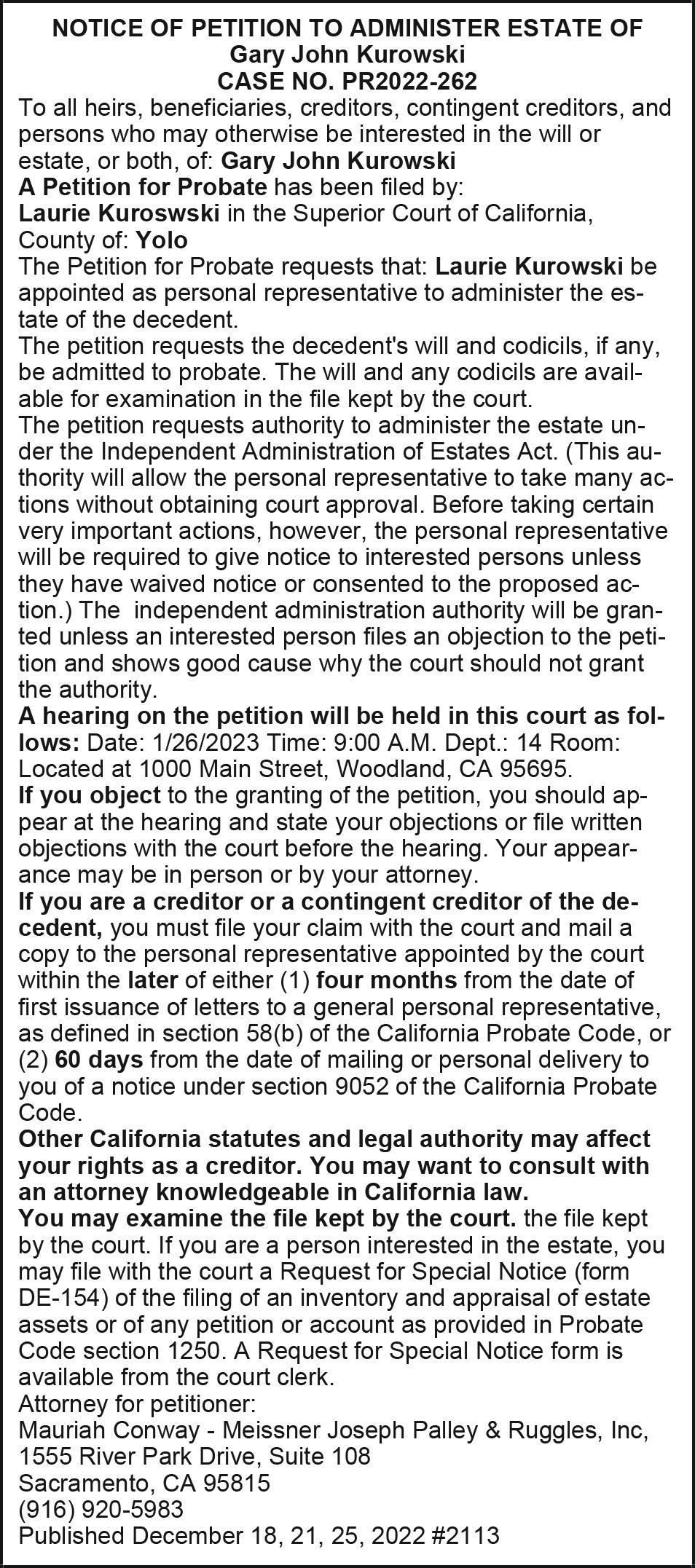

n The Davis Odd Fellows are bringing back their New Year’s Eve dance party with Mumbo Gumbo. This has always been a sell-out show and this year the Odd Fellows are limiting the number of tickets they're selling. The night will be a dance party upstairs with a no-host bar, party favors and a champagne toast at midnight. Downstairs is the quiet lounge, with a no-host bar, complimentary appetizers and desserts all evening, and the big screen tv showing celebrations around the world. All of this for $65. Doors will open at 8:30 p.m. (no sooner) and the music starts at 9 p.m. Tickets are available on Eventbrite.
Wednesday, Jan. 4
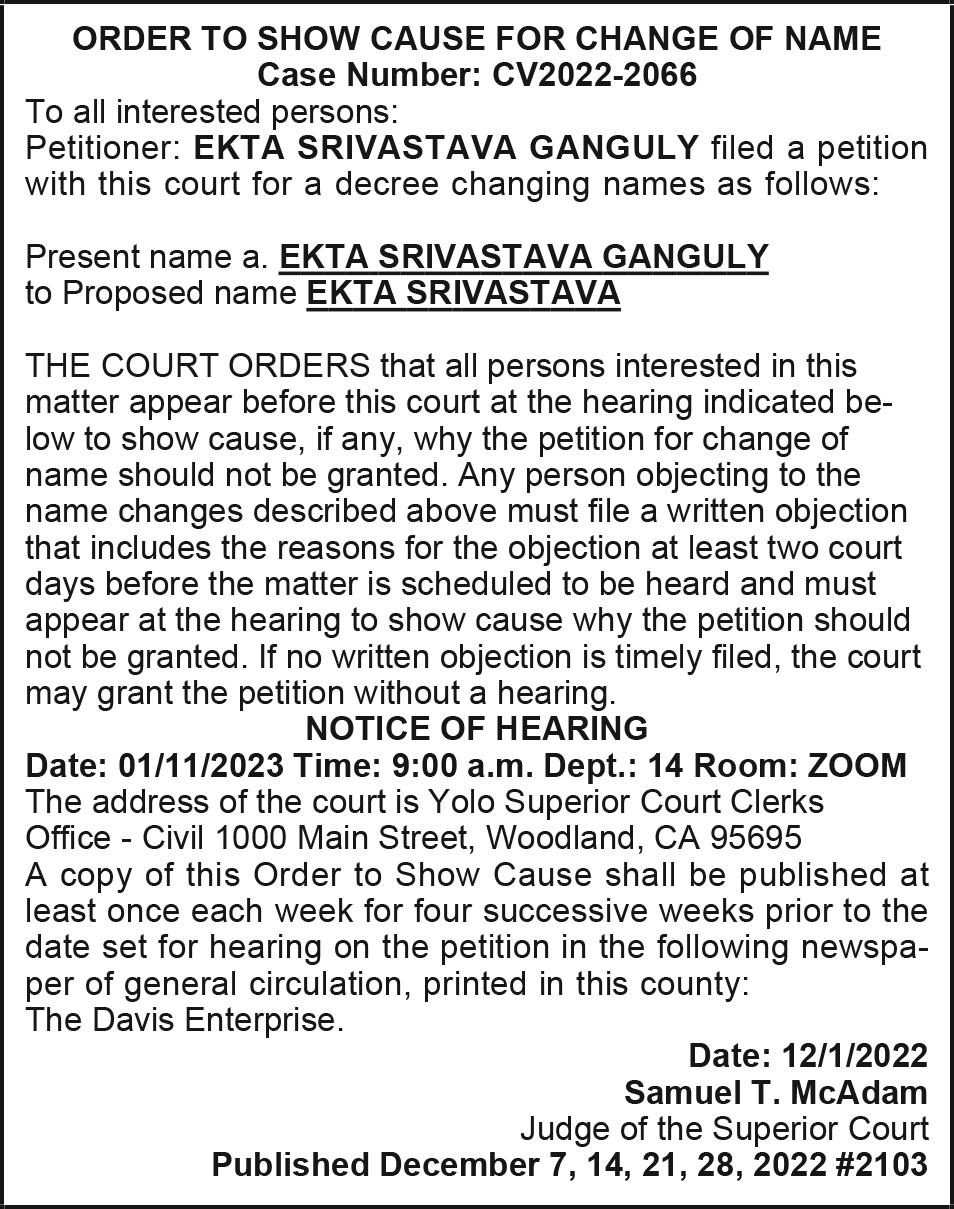
The Valley Oak Chapter of the Embroiderer's Guild of America will host a Zoom presentation by Dolores Andrew at 11 a.m. Andrew is an artist and designer in the needlework disciplines. Among many other accomplishments, she is a certified National Academy of Needlearts Master Teacher of embroidery. In her presentation, she will explore the role of samplers in women's lives through our history. To attend, contact Linda Wayne at laws999@ gmail.com by Dec. 30 to be added to the Zoom list.
Thursday, Jan. 5

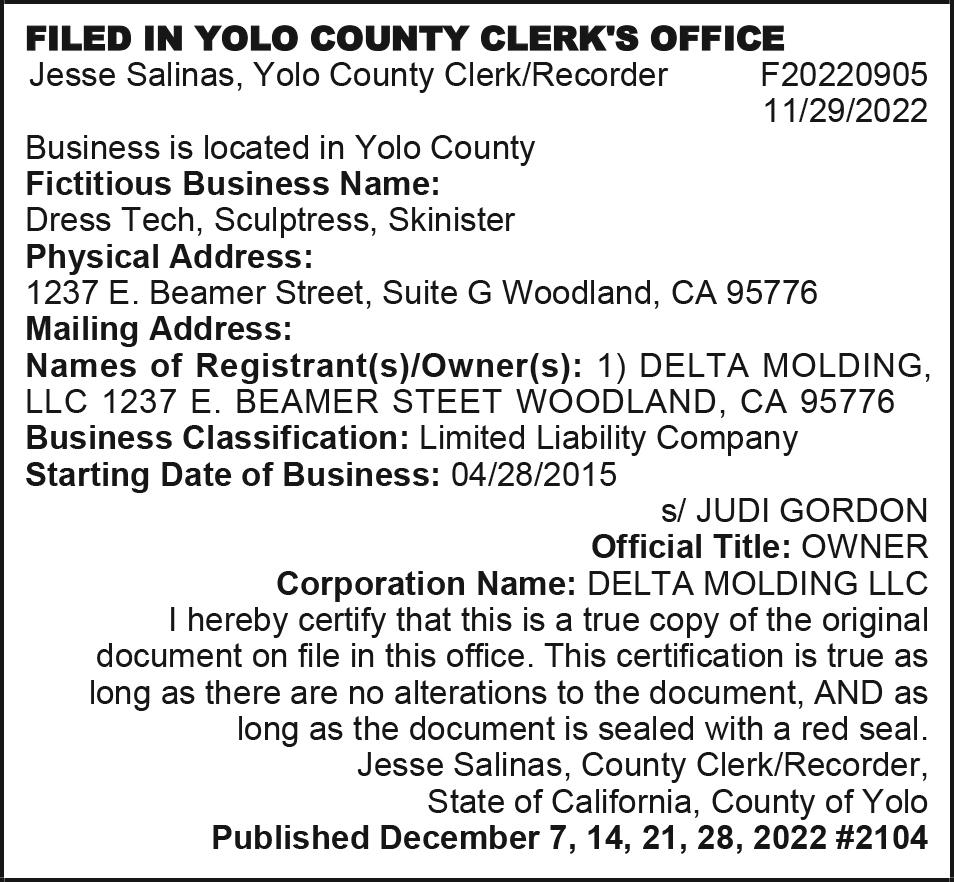
n The Poetry Night Reading Series will feature Allegra Silberstein (author of a new book, “Dancing with the Morning Breeze”) with Jean Beguin at 7 p.m. on the third floor (indoors) of the John Natsoulas Gallery, 521 First St. in Davis. There will be an open mic after the featured performers. Open mic performances will be limited to four minutes or two items, whichever is shorter. The open mic list typically fills by 7 p.m., so arrive early. Organizers recommend mask-wearing. Find out more about the Poetry Night Reading Series at http://www.poetryin davis.com.
UCD: ‘Agrivoltaic’ gear depends on wavelength
 By Kat Kerlin Special to The Enterprise
By Kat Kerlin Special to The Enterprise
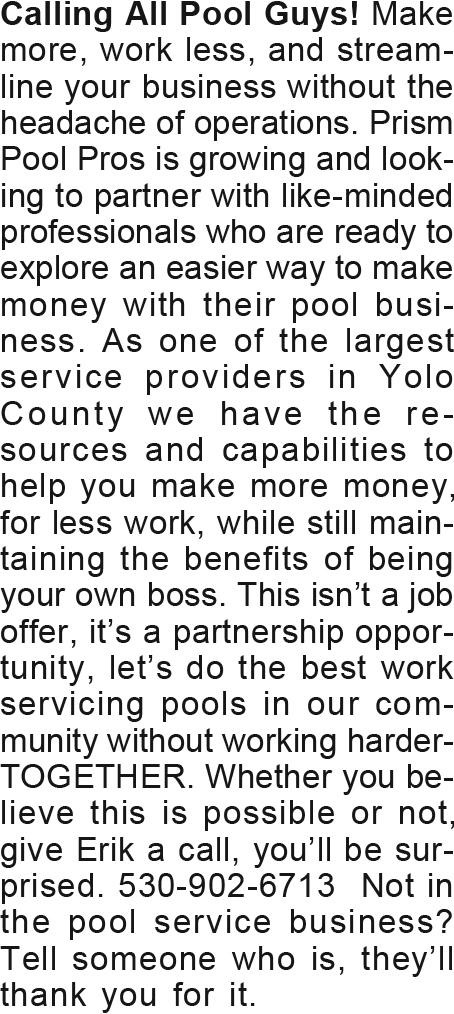
People are increasingly trying to grow food and clean energy on the same land to help meet the challenges of climate change, drought and a growing global population that just topped 8 billion. This effort includes agrivoltaics, in which crops are grown under the shade of solar panels, ideally with less water.
Now scientists from the UC Davis are investigating how to better harvest the sun — and its optimal light spectrum — to make agrivoltaic systems more efficient in arid agricultural regions like California.
Their study, published in Earth’s Future, a journal of the American Geophysical Union, found that the red part of the light spectrum is more efficient for growing plants, while the blue part of the spectrum is better used for solar production.
A door opener
The study’s results could help guide global interest in agrivoltaics and identify potential applications for those systems.
“This paper is a door opener for all sorts of technological advancements,” said corresponding author Majdi Abou Najm, an associate professor at the Department of Land, Air and Water Resources and a fellow at the UC Davis Institute of the Environment. He conducted the study with first author Matteo Camporese of the University of Padova in Italy, who came to UC Davis as a Fulbright visiting scholar. “Today’s solar panels take all the light and try to make the best of it. But what if a new generation of photovoltaics could take the blue light for clean
energy and pass the red light onto the crops, where it is most efficient for photosynthesis?”
For the study, the scientists developed a photosynthesis and transpiration model to account for different light spectra. The model reproduced the response of various plants, including lettuce, basil and strawberry, to different light spectra in controlled lab conditions. A sensitivity analysis suggested the blue part of the spectrum is best filtered out to produce solar energy while the red spectrum can be optimized to grow food.
This work was further tested this past summer on tomato plants at UC Davis agricultural research fields in collaboration with UC Davis Assistant Professor Andre Daccache from the Department of Biological and Agricultural Engineering.
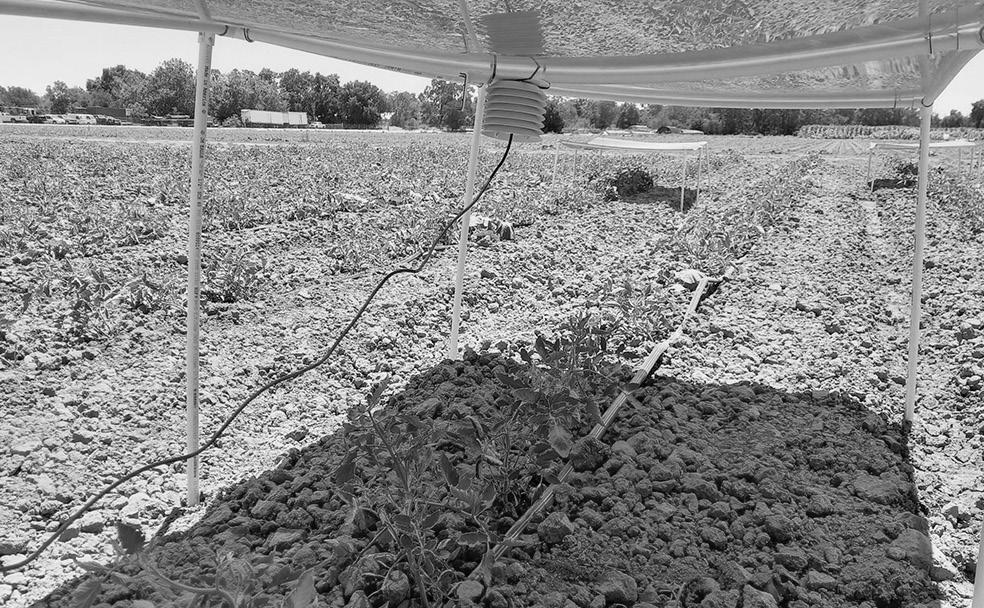
Guiding light
In an era of shrinking viable land, understanding how plants respond to different light spectra is a key step toward designing systems that balance sustainable land management with water use and food production, the study noted.
“We cannot feed 2 billion more people in 30 years by being just a little more water-efficient and continuing as we do,” Abou Najm said. “We need something transformative, not incremental. If we treat the sun as a resource, we can work with shade and generate electricity while producing crops underneath. Kilowatt hours become a secondary crop you can harvest.”
Local A6 THE DAVIS ENTERPRISE WEDNESDAY, DECEMBER 21, 2022
Calendar
A bluespectrum agrovoltaic tomato test. Andre dAccAche/Uc dAvis photo
UC Davis News
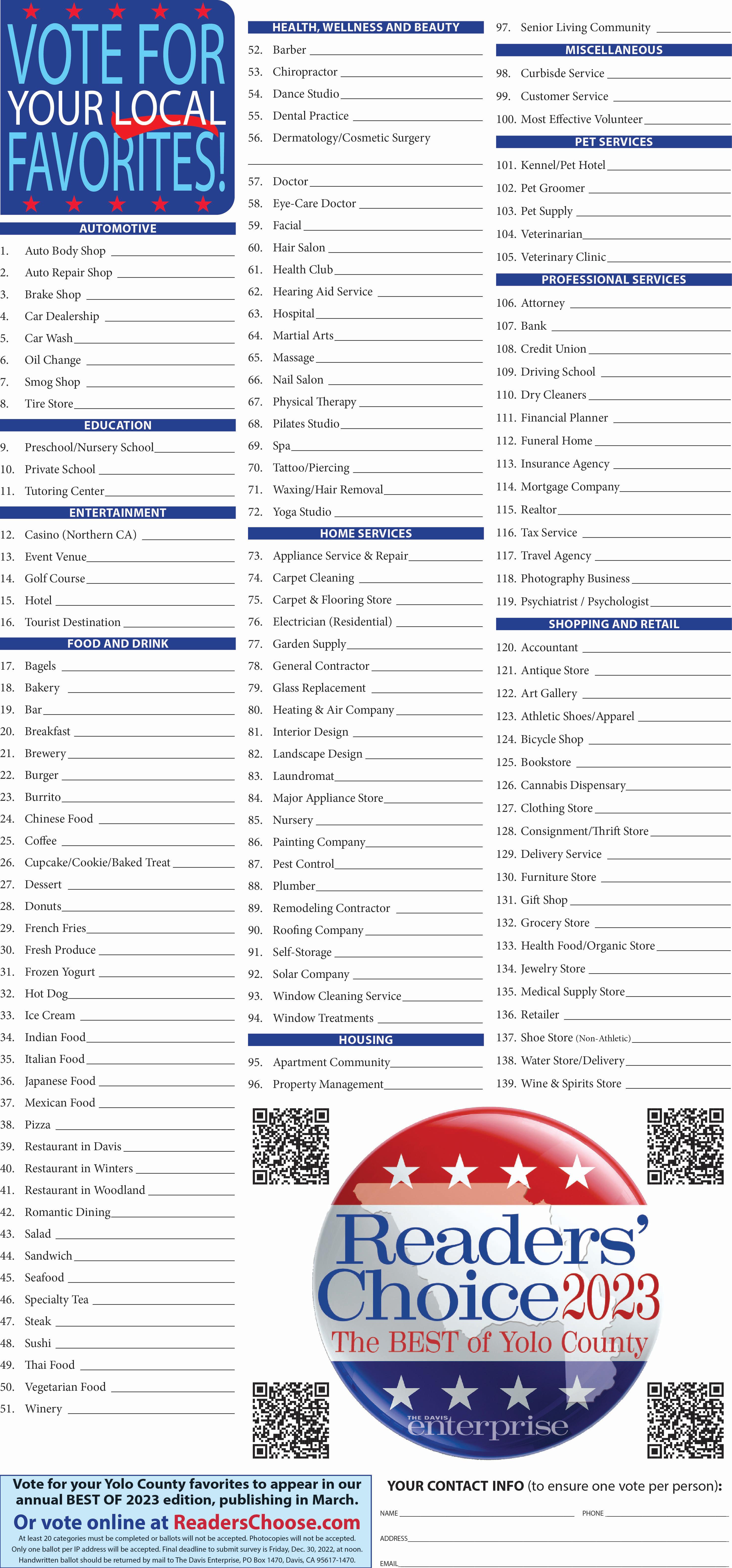
THE DAVIS ENTERPRISE WEDNESDAY, DECEMBER 21, 2022 A7
TEACH: Labor struggle dovetails with professors’ goals
operations at UC campuses since mid-November. Demanding better wages and benefits, workers have withheld their labor of grading assignments, instructing undergraduates and conducting research, while more than 430 tenured and tenure-track faculty members canceled lectures and withheld grades in solidarity.
But new forms of learning have developed at campuses across the state. Professors have held lectures on the picket line, and undergraduates have incorporated the strike into their final projects. Outside of the classroom, graduate students have organized teach-ins, or informal lessons and discussions, that situate the strike within American history, disability studies and other disciplines.
As graduate student researchers and teaching assistants prepare to vote this week on whether to ratify a tentative agreement their negotiators reached with the UC Friday, some undergraduates said the informal learning opportunities emerging from the strike have given them a new perspective on how their university works.
Rodríguez described the strike
as a lesson in how large institutions like the UC have throughout history relied on the exploitation of low-wage labor.
“Students learn all of this between the classroom and the external classroom, being the picket line itself,” Rodríguez said. “I think it becomes a really enriching experience for them.”
Teach-ins replace class
Graduate students may have stopped holding discussion sections and office hours following the strike’s authorization, but they maintained their roles as educators.
In early November, Samia Errazzouki held a discussion section for her undergraduate class on the history of science and technology. The first slide of her presentation read: “To do list: midterm, vibe check, strike.”
Errazzouki used her final discussion section before the strike to explain the history of rising tuition costs at the UC. Even as the system’s chancellors received pay raises in 2022, she told students, graduate students like herself have taken on multiple jobs outside of the university. She also addressed the assigned readings for the week, explaining how
the rise of lucrative military research at universities during the Cold War tied into their continued pursuit of revenue and reliance on cheap graduate student labor.
By contextualizing the strike in UC history, she said, she hoped to ease students’ uncertainty and bolster their support for the union.
“I was trying to tell them … look, (the UC) is going to try to make this sound as if we are taking punitive measures against
you,” Errazzouki said. “But this is not about us versus you.”
Once the strike began, graduate students took their teaching beyond the classroom.
Stephen Eyman, a doctoral student in UC Davis’ linguistic department, held a disability studies teach-in over Zoom and on the picket line that drew grad students and undergrads from across the UC.
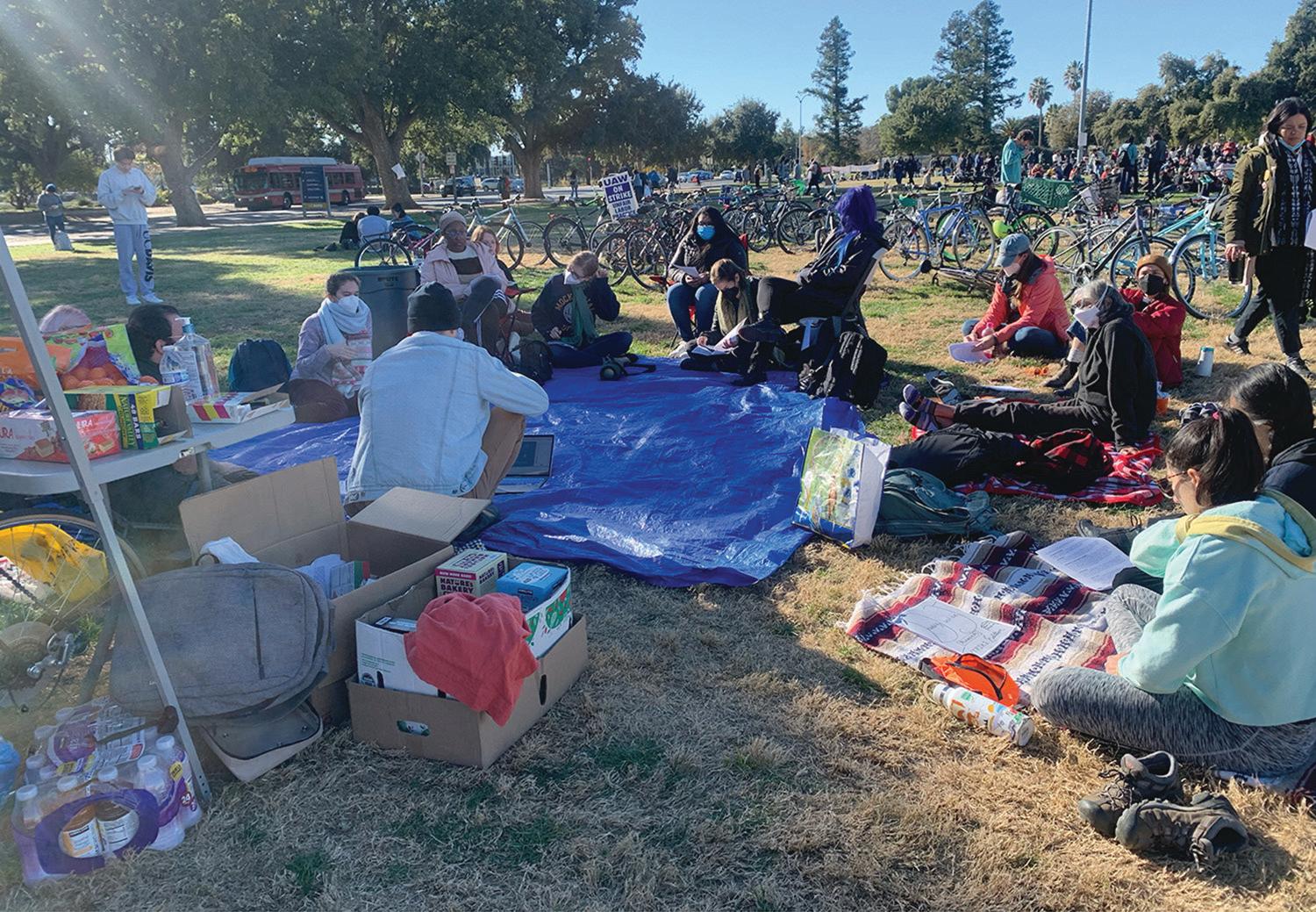
UCD does not have a disability studies department, Eyman said. However, the strike presented the
perfect opportunity to educate fellow students about disability justice, connecting readings and discussions with union demands for accessible education and accommodations for students with disabilities.
“So much can be learned sitting on a tarp, using a karaoke machine as a speaker,” Eyman said.
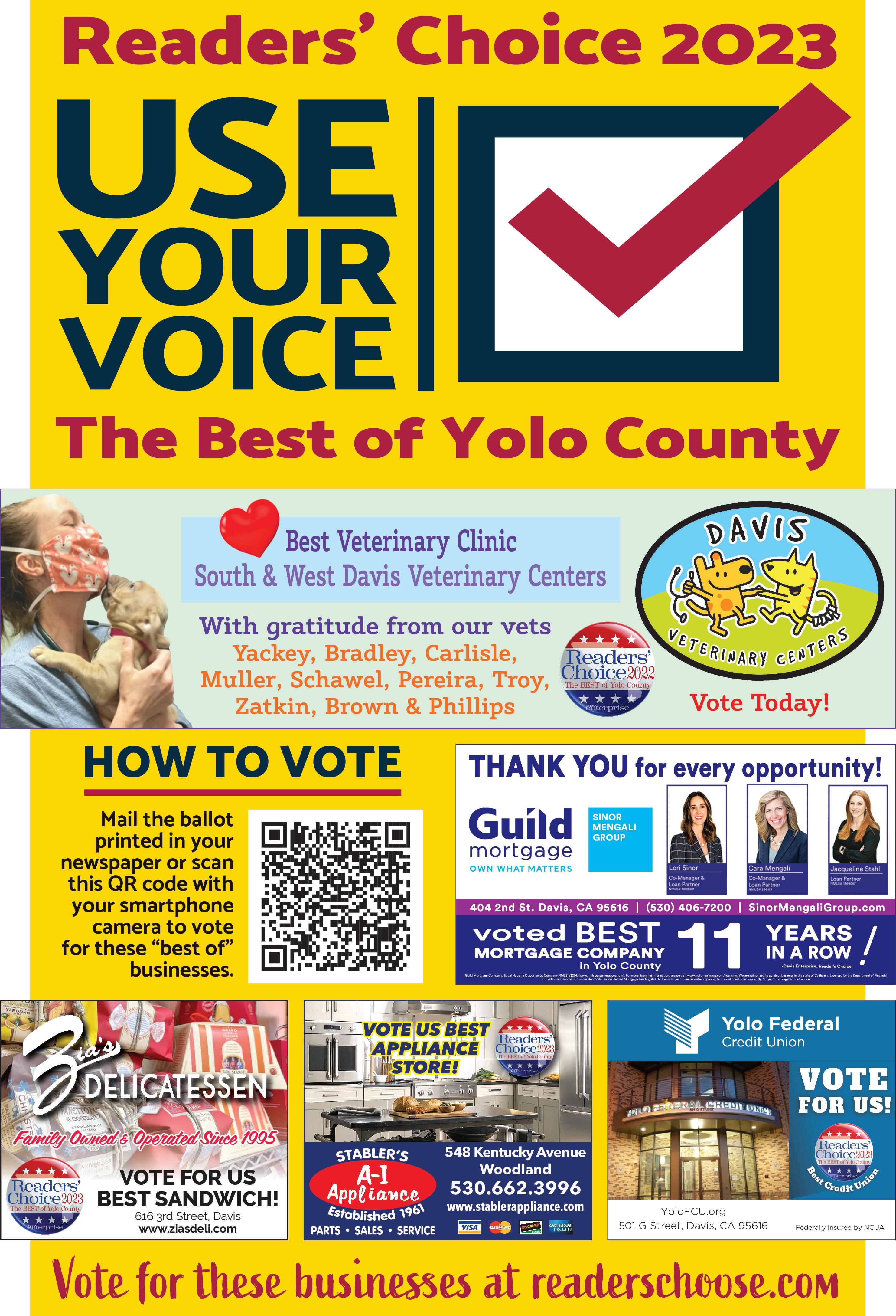
Even though the bargaining team conceded many of the demands students with disabilities had created, he said, “the collaboration and network and solidarity we’ve all created on this campus, and all these campuses, will hopefully have more impact than the weeks that we weren’t able to be involved in the classroom.”
Lesson for the future
Rodríguez said he’s certain that, whatever the strike’s outcome, he will feature it in future classes.
“I would argue that it would be irresponsible not to include some discussion of this strike in any course that deals with labor, that deals with higher education and universities as institutions, that deals with social movements,” Rodríguez said.
From Page One A8 THE DAVIS ENTERPRISE WEDNESDAY, DECEMBER 21, 2022
From Page A1
IngrId Sub CuC/Courte Sy photo vIa CalMatterS
UC Davis students attend a teach-in on disability rights on Nov. 29, during the systemwide strike of academic workers at the University of California.
sports
Les Curry InvItatIonaL
Blue Devils ground Falcons for third place
By Rebecca Wasik Enterprise correspondent
It was a hard-fought battle for the third-place title in the Les Curry Invitational on Saturday.
But in the end, the Davis High boys basketball team came out on top, defeating Christian Brothers High 63-54 in the North Gym.
“Today we played our first complete game,” said Davis head coach Dan Gonzalez. “We scored baskets in clutch situations, and we were able to get defensive stops when we needed them.”
Blue Devils senior forward, Jack Anderson led the charge with a gameleading 16 points.
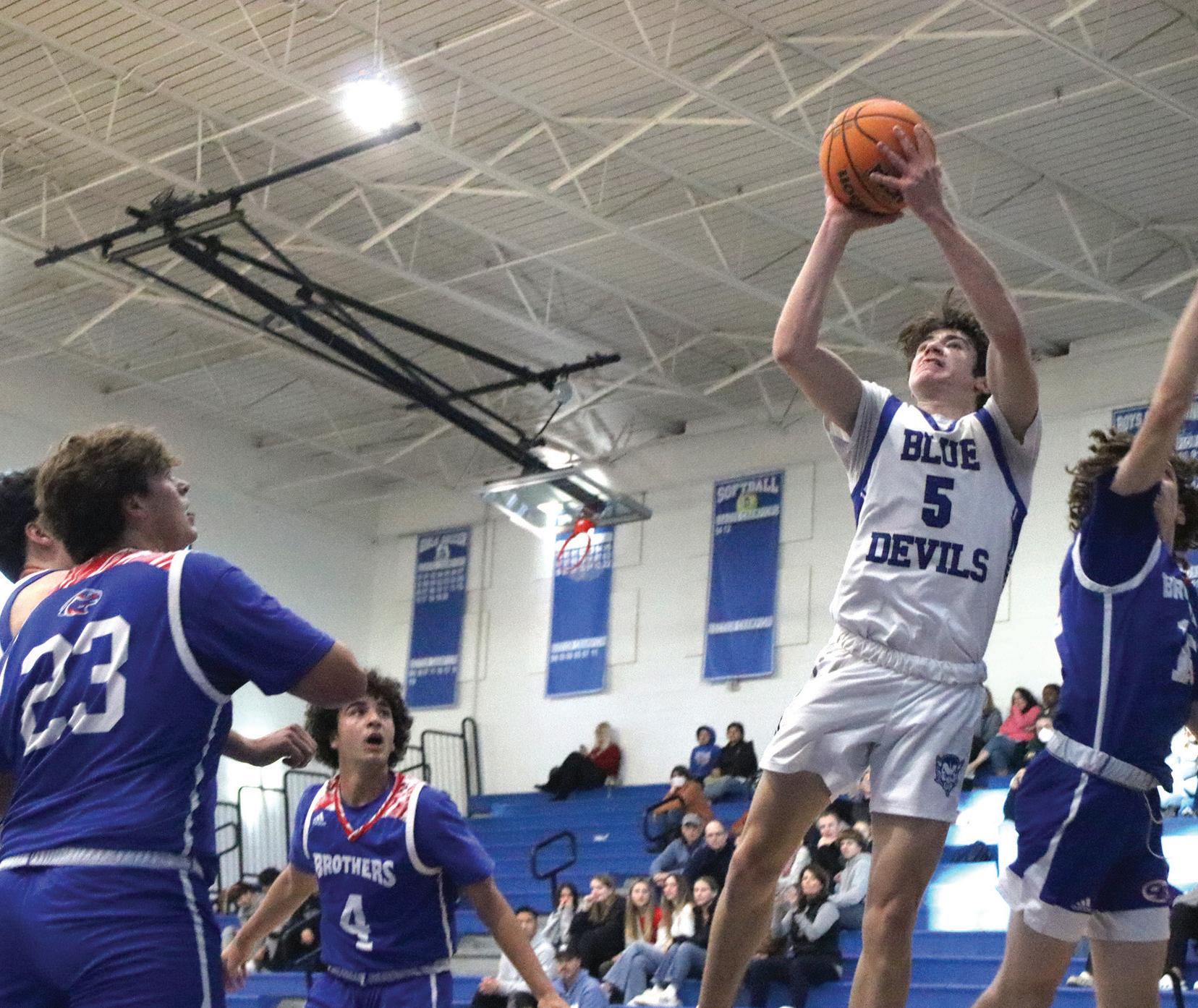
He began his sharp offensive performance by starting the game with a 3-pointer.
Another 3-pointer and field goal in the first quarter from Anderson, plus baskets from junior center Alden McCabe, junior guard Aidan Crawford and senior power forward Will Ackerman put Davis (5-4) on top at the end of the first frame with a 14-10 advantage.
McCabe came out strong in the second quarter, scoring the first six points of the frame.
Davis continued to build its lead with
two baskets and two free throws for a 6-0 run. That put the Blue Devils at 20-10.
After a Falcons’ 3-pointer, Crawford made two free throws, as did Ackerman.

Kaleb Gee followed by making 1-of-2 free throws.
A basket from Crawford and a 3-pointer from Anderson closed out the first half for Davis.
At halftime, DHS led Christian Brothers (7-4) by a 30-23 score.
Anderson once again took hold of the reigns to begin the third quarter for the Blue Devils.
After making 1-of-2 free throws, he added two more buckets to Davis’ tally.
Senior shooting guard Matt Cossu then banked a 3-pointer, followed by two field goals from Ackerman.
But Christian Brothers found its offensive rhythm in the frame though, outscoring Davis 16-11.
Going into the fourth quarter, the Blue Devils led the Falcons 42-39.
Then DHS brought the energy and fight needed to overcome Falcons’ offensive battle in the frame.
Jadyn Coaker led that fight for Davis, scoring all 11 of his points in the game in
Aggies face UCLA today UCD women fall to Lumberjacks
By Bob Dunning Enterprise staff writer
When the UC Davis men’s basketball team takes the floor in Pauley Pavilion this afternoon against the UCLA Bruins, it may be hard for them to avoid seeing what hangs from the rafters of one of the most storied basketball arenas in the country.
No, we’re not talking about Christmas decorations. What does flutter from on high in this hoops cathedral are 11 NCAA national championship banners, all but one achieved under legendary head coach John Wooden from 1964-1975.
Game time in 13,800-seat Pauley Pavilion is 2 p.m. The game can be viewed on the Pac-12 network or heard on Sactown Radio (1140 AM) with the Voice of the Aggies, Scott Marsh, on the call.
The Aggies bring a 7-4 mark into the game after last Saturday’s 79-68 setback at Eastern Washington.
The No. 9 Bruins are 10-2 and have their eyes squarely on a 12th championship banner after reaching the Final Four in 2021 and the Sweet Sixteen last season under fourth-year head coach Mick Cronin.
After impressive road wins last week over No. 20 Maryland, 87-60, and No. 13 Kentucky, 63-53, the Bruins were named the National Team of the Week by ESPN basketball writer Jeff Borzello. Indeed, UCLA seems to have hit its stride just in time for a serious run at the Pac-12 title and a near-certain bid to the NCAA’s Big Dance come March.
UCLA roared out to a 49-20 halftime lead at Maryland and pushed the margin to 38 in the second half before Cronin cleared his bench, then used a late run to subdue Kentucky at Madison Square Garden in New York City.
For Cronin, who coached for 13 years at Cincinnati, his alma mater, before taking the job in Westwood, it all starts with defense.
After the Bruins held Kentucky to just 53 points in their most recent outing, Cronin noted, “The game
By Mike Bush Enterprise sports editor
Tova Sabel had a big game for her UC Davis women’s basketball teammates.
The junior guard from Stockholm, Sweden, was one of three UCD players who scored in double figures in Monday’s nonconference game against Northern Arizona.

The Aggies entered the fourth quarter of the contest with a double-digit lead.
But the visiting Lumberjacks made their shots at the free throw line in the end. That led to Northern Arizona posting an 83-81 victory over UCD at the University Credit Union Center.
“Give them credit, they hit big shots when they needed to,” said UC Davis head coach Jennifer Gross.
Added Sabel, “It was a really tough game. There was a lot of physical plays and physical calls that were made.”
Both UCD (4-6) and Northern Arizona (6-6) had 10 fouls each.
Sabel, who is in her first year in the Aggie program, came off the bench and scored 30 points in the game. Sabel’s shot selection varied on the court; she made 12-of-23 field goals and sank 3-of-6, 3-pointers. She is the first Aggie to score 30 or more points in a game since Cierra Hall had 32 points in 2019.
“She was exceptional,” said Gross of Sabel. “She was a huge bright spot for us. That’s what she can do consistently. She can go inside and out.”
UC Davis entered the fourth quarter with a 67-53 advantage. Aggie guard Evanne Turner made two of her four 3-pointers at the beginning and toward the end of the quarter, as she finished with 13 points.
However, Northern Arizona posted impressive numbers in the final 10 minutes of the game. The Lumberjacks made 8 of 18 from the field, 4 of 6 at the 3-point line What was probably the most important number was the 10 makes of 11 from the free throw line.
Coming out of a time out UCD called at 4:17 in the quarter led to the exciting minutes for the 422 fans in attendance of the game. The Aggies held a 77-70 lead.
Northern Arizona canned one of its 3-pointers in the quarter to cut the score to 77-73.
The big play in the quarter came at 1:11 when Lumberjacks guard Olivia Moran completed a 3-point play that included a field goal and fouled while going to the basket. That cut the Aggies’ advantage to 77-76.
After Turner canned a 3-pointer that pushed UCD to an 80-76 score at 28.4 seconds left on the clock, Moran hit another basket for an 80-78 score seven seconds later.
Northern
Moran sank 1-of-2 free throws at 16.9 seconds, which cut the Aggies lead to 80-79.
Turner was fouled on the other end of the court, and also made a free throw for UCD at 14.7 seconds for an 81-79 score.
The last 5.9 seconds was about Moran and Aggie guard Sydney Burns.
Moran was fouled by UCD forward Mazatlan Harris at the 5.9 mark. Moran made both shots at the free throw line, tying the game at 81-81 and signs showing of the contest going into overtime.
Then UCD got the ball back after Moran’s free throws. Moran ran and bumped Burns, who appeared to be waiting for the pass. Moran shoved Burns, who fell on the court. But Burns was whistled for a foul with 2.3 seconds on the clock.
Moran went back to the free throw line, making both shots that led to the win.
“It’s a tough call down the stretch, to be honest,” Gross said. “It was such a hard-fought game. In that play, you hope as a coach that they just play it out and see what happens. It was unfortunate. We’ll have to go back to watch the film. If we did fell, we’ll have to clean that up because we can’t have those kinds of plays moving forward.”
B Section Forum B3 Gift Guide B4 Holiday Lights B7 Sports B8 THE DAVIS ENTERPRISE — WEDNESDAY, DECEMBER 21, 2022
MIke Bush/enterprIse photo
See THIRD,
B8
Davis guard Aidan Crawford (5) gets ready to release the basketball in front of two Christian Brothers players in Saturday’s third-place game of the Les Curry Invitational. Crawford was named to the all-tournament team. To view more photos from the game, visit www.davisenterprise.com, click on the Sports tab and look for the story.
Page
CoLLege BasketBaLL
Leroy yau/uC DavIs athLetICs-Courtesy photo
UC Davis guard Tova Sabel (14) drives to the basket in Monday’s non-conference game against Northern Arizona at the University Credit Union Center. The junior scored 30 points in the Aggies’ tough loss to the Lumberjacks.
Arizona guard Nyah
See UCD, Page B8
MIke Bush/enterprIse fILe photo
Aggie guard Elijah Pepper (left) tries to break up a pass in a non-conference home game against Holy Names University on Dec. 13.
See TODAY, Page B8

B2 THE DAVIS ENTERPRISE WEDNESDAY, DECEMBER 21, 2022
A great leap forward for clean energy
By Robert Powell Special to CalMatters
At 1:03 a.m. Monday, the prospect of a world fueled by clean nuclear fusion took a giant leap forward.
Scientists at Lawrence Livermore National Laboratory, just 90 minutes from Sacramento and an hour from San Francisco, got more energy out of a controlled nuclear fusion reaction than they put into it. This was a breakthrough. No other controlled fusion experiment, based on any technology, has come close.
This staggering accomplishment was a team effort, funded by the federal government and focused on cutting-edge science in support of the Livermore Lab’s national security mission.
Over the years, the prospect of achieving clean energy through fusion has motivated a generation of scientists and engineers. They foresaw a future wherein the same principle used to release the destructive energy of a hydrogen bomb could instead be used under rigorously controlled laboratory conditions to power the world.
Californians should feel immense pride in this accomplishment at the Livermore Lab’s National Ignition Facility.
The lab, or LLNL, has been co-managed by the University of California since its beginning in the early 1950s. Many of its staff members were educated in California. LLNL’s director, Kim Budil, earned her doctorate degree from UC Davis. She was one of the four highly accomplished women who announced this breakthrough in Washington.
The nuclear fusion achievement is the culmination of 60 years of creative science and rigorous engineering. In 1972, John Nuckolls, an LLNL scientist who later became its director, postulated that fusion could be achieved by focusing lasers on a target of deuterium and tritium. The need for building a sufficiently powerful laser to realize this was recognized in the 1990s, when the U.S. stopped nuclear weapons testing and the concept of science-based nuclear stockpile stewardship was fully articulated.
The National Ignition Facility, known as NIF, was built over a 15-year span to oversee that work. Against threats, including Russia’s current nuclear saber rattling, the response from the U.S. and its allies is sustained by the deterrent capacity of our nuclear arsenal.
In our 30-year absence of testing nuclear weapons, this capacity is assured by a deep knowledge of the underlying science of how nuclear devices work.
The breakthrough accomplished this week is a milestone that illuminates a new path. While it won’t solve the world’s energy problems overnight, it will catalyze further breakthroughs and accelerate the development of fusion energy based on the NIF technology — as well as fusion energy from competing (but so far unproven) technologies. It should inspire new generations to tackle the difficult problems associated with the world’s reliance on fossil fuels.
The NIF results demonstrate to the world that the United States is the leader in the inertial confinement fusion technology, with a significant portion of that knowledge base located here in California. We should expect our state to continue fostering cutting-edge science and technology, and to lead the world to a better future. Our institutions of higher education, our national laboratories and our future-minded industries have done this for generations.
The people who made the Livermore Lab breakthrough happen have joined a long line of scientists, engineers and innovators. They are among our best and brightest who work to ensure a secure future for our nation, a better world for everyone, and help cement California’s role as an incubator of progress in fusion science and technology.
— Robert Powell is a distinguished professor at UC Davis. He chairs the science and technology committee for Lawrence Livermore National Security, the management and operating contractor for Lawrence Livermore National Laboratory. He wrote this for CalMatters, a public interest journalism venture.
D.A.s seeking transparency
There is nothing most California convicts want more than to be released before their sentence is up, even before they have earned enough good-conduct credits to qualify for early release.
Across California’s prison system, many inmates are getting their wish, thanks to a steady program of early releases for prisoners whose offenses are legally deemed “non-violent,” even though that category can include things like human trafficking, rape of an unconscious person and domestic violence.
This is not parole, which must be approved by appointive panels operating independently of the California Department of Corrections and Rehabilitation (CDCR). This is arbitrary action aimed at emptying the prison system as much as Gov. Gavin Newsom’s administration can get away with under the guise of reducing the risks of prisons becoming super-spreader sites for COVID-19.
While it’s true that convicts are often kept at close quarters with one another, both in cells and on exercise yards, masking and vaccines usually can prevent major outbreaks of the dangerous virus.
One lengthy investigation by CBS-TV concluded the early release process — conducted under emergency regulations — has been both
Letters
dangerous and arbitrary, conducted entirely out of the public eye. It has even seen the release of prisoners who were denied parole for substantial cause. It’s unknown whether those rules will automatically expire if the public emergency Newsom declared in spring 2020 ends in February, as the governor has promised.
As long as 18 months ago, 41 elected district attorneys from around the state filed a petition with CDCR asking for repeal of those regulations and the unpublicized releases.
That was even before the release of convicted domestic abuser Smiley Martin, the main suspect in last April’s mass shooting in Sacramento, which killed six.
Martin, authorities have said, was able to get out after serving just four years of a 10-year term despite a record of prison fights with other convicts because his original offense was legally considered non-violent, allowing him to earn good-conduct credits faster than formally violent criminals.
Help from 5,100 miles away
On Dec. 12, Davis police officers led by Cpl. Pheng Ly thwarted a theft from nine hours earlier at the Newark, N.J., airport.
Within a few minutes of arriving, my cell phone had been taken out of an open backpack. We called the phone, but the thief had immediately shut it off. A hurried attempt to locate it with Apple’s “Find My Phone” app was to no avail.
After boarding a flight to Portugal, I felt I couldn’t allow someone to get away with the theft. I connected to the wi-fi and continued to monitor the app. Five-and-ahalf hours into the flight and there it was: Sacramento. The app tracked the phone to Gridley, Yuba City and Davis.
Once in Portugal, I called the Davis Police Department, and almost immediately I received a callback from Cpl. Ly.
He asked me for a screenshot of my “Find My Phone” app, showing the location of the phone. It was right up against a local hotel, along with an arrival time of about 3:30 a.m.
enterprise
A McNaughton Newspaper Locally owned and operated since 1897
Foy S. McNaughton President and CEO R. Burt McNaughton Publisher
Sebastian Oñate Editor
Official legal newspaper of general circulation for the city of Davis and county of Yolo. Published in The Davis Enterprise building, 325 G St., Davis, CA. Mailing address: P.O. Box 1470, Davis, CA 95617. Phone: 530-756-0800. An award-winning newspaper of the California Newspaper Publishers Association.
Speak out President
Riverside County D.A. Mike Hestrin, one of the signers of the district attorneys’ petition, wrote that “Releasing dangerous and violent felons into our communities by reducing their sentences by as much as 50 percent puts the public in danger… Victims and their families deserve to be heard on how the (emergency) regulations might affect them and public safety in general.”
But the D.A.s never filed a formal court petition. They have now asked CDCR to explain how it decides which prisoners to release early — “especially those who have not engaged in rehabilitation programs … This needs to stop now. This is not reform. It is an anti-transparent experiment that is gambling with public safety.”
Added Yolo County D.A. Jeff Reisig, “The public has a right to know what these people are doing to rehabilitate themselves.”
Meanwhile, legislators bent on cutting down the prison population and possibly closing some of the state’s most remote penitentiaries also passed a law in 2019 allowing early release of many inmates who committed felonies while juveniles, but were convicted as adults.
The D.A.s always objected to that law, known as SB 1391,
Ly and his partner took it from here. They quickly identified there were several rental cars in the vicinity of the ping. It had rained and all the cars were wet, except one, which had probably just arrived after the rain. They ran the plates and were able to identify that the renter was in fact from New Jersey and had recently arrived.
They needed to get the renter to come out to talk, which they accomplished by calling him and telling him that his car was possibly illegally parked. The renter eventually responded outside. Ly said the reason he wanted to talk to him was about an iPhone that might have come into his possession at the Newark airport. Ly said he simply wanted the iPhone returned.
I will shortly be rejoined with my iPhone, which Ly mailed to my home in Connecticut that morning after he got off shift and at his own expense.
So I say thank you to Corporal Ly and his fellow officers. Davis can be proud of the professionalism and perseverance of these officers.
John Walter Connecticut
The Hon. Joe Biden, The White House, Washington, D.C., 20500; 202-456-1111 (comments), 202-456-1414 (switchboard); email: http://www.whitehouse.gov/contact U.S. Senate
Sen. Dianne Feinstein, 331 Hart Senate Office Building, Washington, D.C., 20510; 202-224-3841; email: http://feinstein. senate.gov/public/index.cfm/e-mail-me Sen. Alex Padilla, B03 Russell Senate Office Building, Washington, D.C., 20510;
202-224-3553; email: padilla.senate. gov/public/index.cfm/e-mail-me
House of Representatives
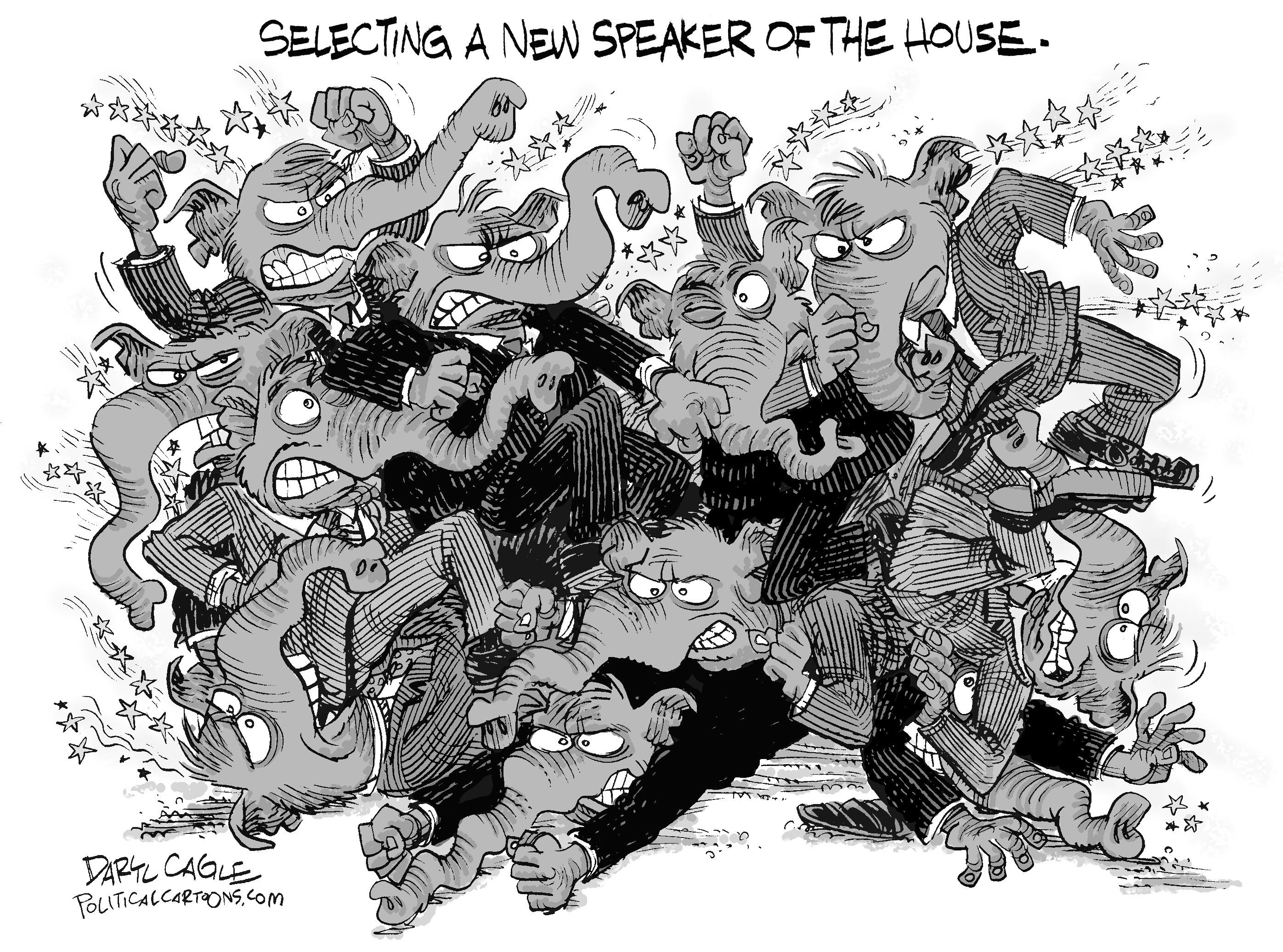
Rep. John Garamendi (3rd District), 2368 Rayburn House Office Building, Washington, D.C., 20515; 202-225-1880.
District office: 412 G St., Davis, CA 95616; 530-753-5301; email: visit https://garamendi.house.gov/contact/ email
Governor
Gov. Gavin Newsom, State Capitol, Suite 1173, Sacramento, CA 95814; 916-4452841; email: visit https://govapps.gov. ca.gov/gov40mail/
saying it could free hundreds of dangerous prisoners. One they sometimes cite is Adrian Gonzalez of Santa Cruz, convicted on the basis of video evidence of raping and killing an 8-year-old neighbor girl and dumping her body in a trash bag. Because he was aged 15 years, 8 months at the time of his crime, he will be released in 2024, just nine years after the rape/murder. If he had been tried as an adult, he could have gotten a 100year sentence.
Considering how much national Republicans used fear of crime in the November 2022 election, the Democrats who control Sacramento might want to revisit SB 1391, whose toll in repeat crimes is sure to rise in coming years as more onetime juvenile felons are released.
For Democrats might just want to assure their continued domination of California politics by doing something to prevent Republicans from making crime a major future issue here, as they have elsewhere.
— Email Thomas Elias at tdelias@aol.com. His book, “The Burzynski Breakthrough, The Most Promising Cancer Treatment and the Government’s Campaign to Squelch It” is now available in a softcover fourth edition. For more Elias columns, visit www.californiafocus.net
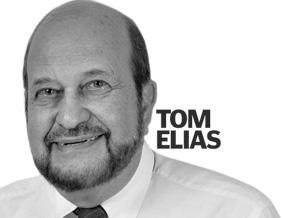
The power of memoirs
Many thanks to Craig Dresang for his Dec. 18 column on the importance of storytelling in our lives.
His thoughtful insights into the benefits of capturing and sharing our life stories mirror my own experiences.
At the onset of the pandemic, when much of daily life came to a screeching halt, I started two online memoir-sharing groups. One blossomed out of my own social-media network and the other was an offering through Age Friendly Rhode Island. Group members in both groups enjoyed a strong sense of connection and the satisfaction of capturing their life stories both for their aging selves and/or for their family.
Mr. Dresang summed up his column saying, “Every life is a tale worth telling.” I share his sentiments from the bottom of my heart. For that reason, I’m offering a new memoir-sharing group at the Davis Senior Center starting in January. No previous writing experience required.
Lois Erhartic Davis
We welcome your letters
Addresses and phone numbers should be included for verification purposes; they will not be published.
Limit letters to 350 words. Anonymous letters will not be accepted. We reserve the right to edit all letters for brevity or clarity.
Mail letters to The Davis Enterprise, P.O. Box 1470, Davis, CA 95617; bring them to 315 G St.; fax them to 530-756-1668; or email them to newsroom@davis enterprise.net.
Forum THE DAVIS ENTERPRISE WEDNESDAY, DECEMBER 21, 2022 B3
Commentary
Toy buying tips when shopping for kids
age-appropriate gifts.

Shopping for gifts for kids makes many shoppers nostalgic for their own childhoods. Few adults can forget the joy of finding the perfect gift under the tree on Christmas morning. Recreating that magic for a youngster can be as joyous for gift-givers as it is for kids. That’s especially so when shoppers make it a point to give safe,

Whether shopping for their own children or their grandkids, nieces or nephews, shoppers can keep these tips in mind to ensure they give toys that are as safe as they are fun.
■ Speak to Mom and Dad first. When buying for a grandchild, niece or nephew, shoppers should first ask Mom or Dad for suggestions. Parents will
See TOYS, Page B5
How to make Christmas Eve special for kids
Metro Special to The Enterprise
Christmas Eve is viewed differently by different people, even those who live under the same Santaready roof. Adults may see Christmas Eve as crunch time when they must prepare food for the next day or set up presents for their children to open in the morning. Children, on the other hand, are focused on Santa’s visit and little else.
Parents naturally want to make Christmastime as special as possible for their children, and that may involve ensuring that Christmas Eve is just as memorable as Christmas Day. The following are some ways to impart more magic into Christmas Eve celebrations.
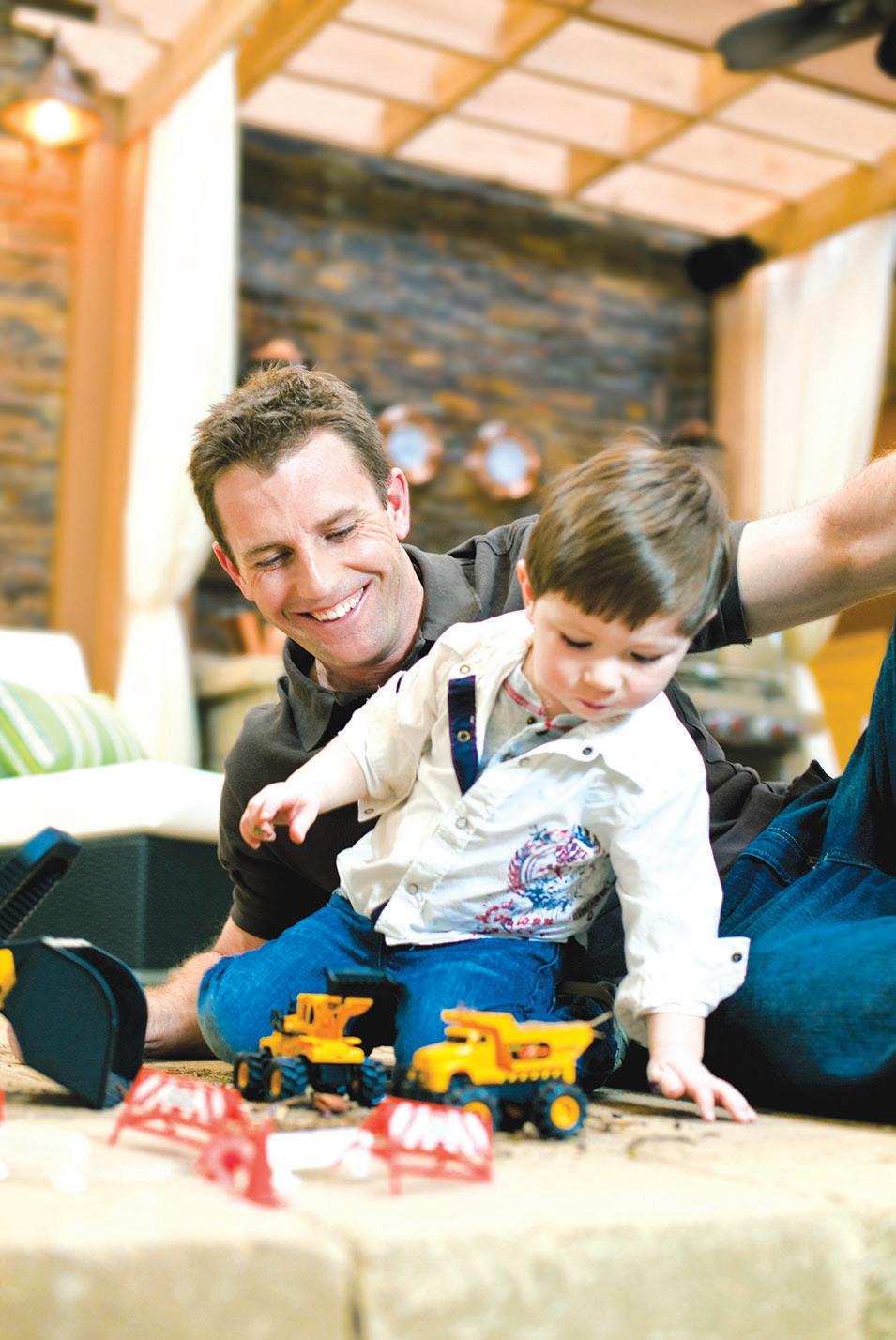

Attend Mass at midnight
Practicing Christians celebrate the birth of Jesus Christ on Christmas. On Christmas Eve, churches often hold celebrations that may include late-evening or midnight masses that
celebrate the birth of Christ when the calendar switches over to December 25. While it does make for a late night, it can be thought-provoking for kids and a unique experience unlike any other.
Bake fresh cookies
Children like to leave out a plate of cookies and a glass of milk for Santa. That makes Christmas Eve a perfect time to whip up a fresh batch of cookies. Explore different recipes to come up with a unique offering each year.
Read a Christmas story Watching television or looking at a tablet or
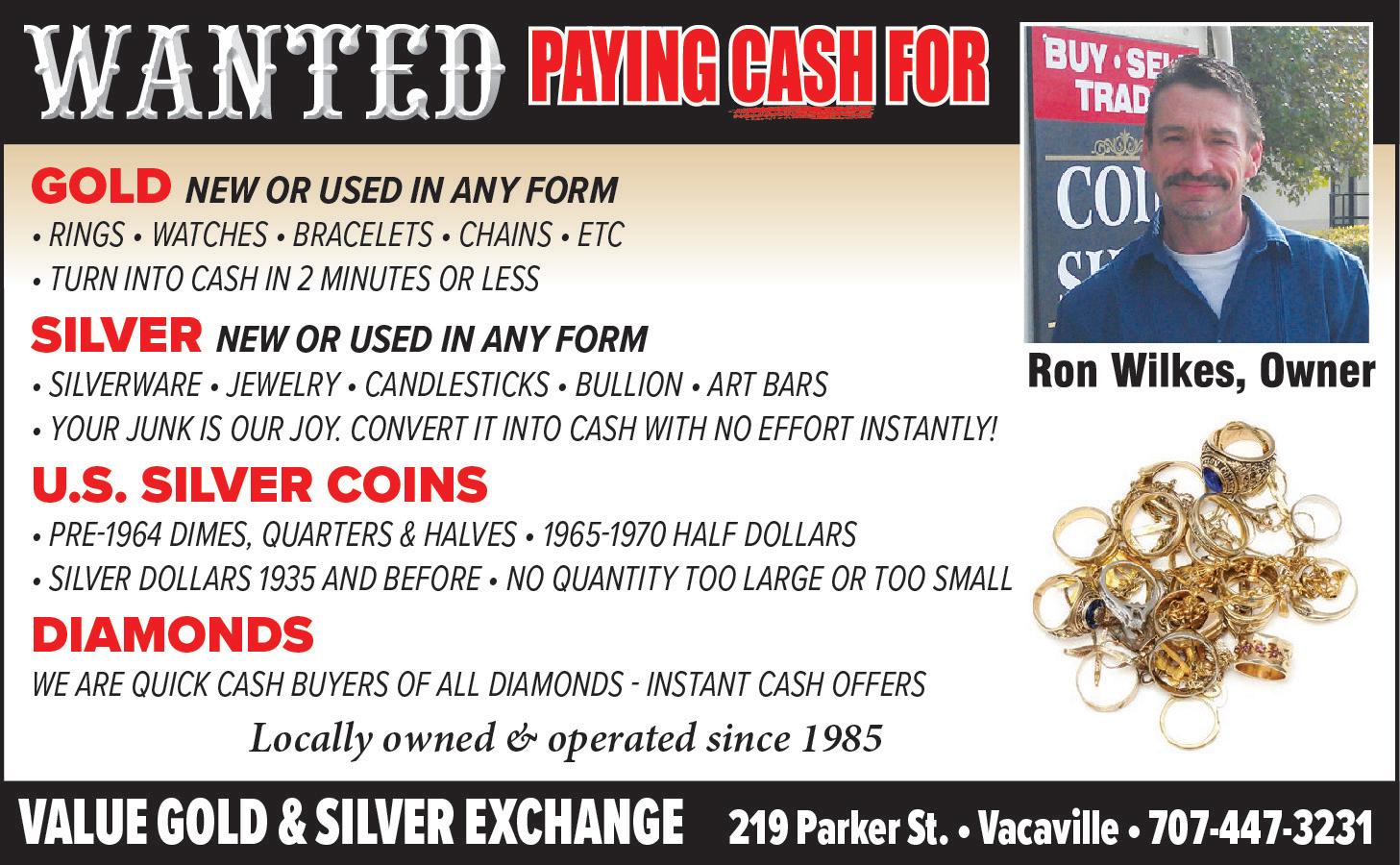

mobile phone before bed can be too stimulating when it’s time for children to wind down for bed.
Choose a holiday tale or tales that can be read as a Christmas Eve bedtime story. Reciting the poem “A Visit from St. Nicholas (‘Twas the Night Before Christmas)” is a great way to set the Christmas Eve mood.
Make a batch of ‘reindeer dust’
Why should Santa’s reindeer be left out when it comes to receiving treats? Reindeer dust, made from a combination of oatmeal, rice cereal, dried fruits, and glitter (if desired), is
purported to attract Santa’s reindeer and provide them a nibble at the same time. Plus, it’s generally safe for other animals in the yard to eat.
Go caroling
Caroling may not be the norm, but some families may want to revive it. Close-knit communities can organize family-centric caroling opportunities and roam the cul-de-sacs and other pedestrianfriendly areas singing popular songs.
Christmas Eve is a great time to embrace various traditions that help to make the season even more special.
B4 THE DAVIS ENTERPRISE WEDNESDAY, DECEMBER 21, 2022
Metro Special to The Enterprise
There are some ways to impart more magic into Christmas Eve celebrations.
Courtesy photo
Courtesy photo
Shoppers must consider a host of factors when looking for safe toys for kids this holiday season.
Get started giving the best gift ever now.



Charitable gifts
Gifting to the person that has everything just got easier.
Special to The Enterprise
You can give them the warm fuzzies all year long by supporting a cause that’s dear to their heart. Get started giving the best gift ever now.
Finding a charity
First, think of the person you’re giving to and think of the causes they enjoy supporting or might enjoy supporting. If they have a house full of rescue dogs, consider animal charities, for instance. Then find a charity worth giving to. You can use sites like Charity Navigator to find organizations that responsibly use your donations. It also gives you suggestions on different topics, so you can browse by interest, too.
Making the gift
Next, choose how much you want to give. Different charities may have different levels of giving for you to peruse, but remember that every little bit helps. Heifer International, for instance, maintains a gift catalog that allows you to choose concrete examples of what your money goes to. A flock of chicks is $20 or $10 per month. You can purchase a goat for a family for $120, or shares for $10. Ducks are $20 each, honeybees are $30 and so on. The organization will then send them free honor cards to let them know you gave on their behalf.
Giving the gift
Like Heifer International’s honor cards, most organizations will contact the person you’re giving on behalf of to let them know. They may even send something beyond a card, such as when you adopt an animal at a wildlife organization. The World Wildlife Foundation offers a Tub of Cubs or a Bucket of Frogs (don’t worry, they’re plushies) to help your recipient learn more about wildlife conservation in a cute and fuzzy way. You can also choose other stuffed critters if cubs and frogs aren’t your thing.
Regular giving
You may choose to have your gift go out monthly, quarterly or annually on behalf of your recipient, setting up a gift that keeps on giving. For smaller organizations, a long-term gift, even if it might be smaller than a lumpsum gift, makes it easy to plan programming to help their cause. Your recipient will appreciate it, too, as it stretches out the gift all year.

TOYS: Consider a host of factors
From Page B4
know which types of toys their children like, and they’ll also know the child’s level of maturity. Some kids may not be mature enough to play with otherwise age-appropriate toys, while others may be mature beyond their years and enjoy more complex toys than their age would suggest. Parents will know what makes a good toy and what doesn’t.
■ Learn what to look for on labels.
Toy labels are great sources of information, but shoppers must know what to look for. The American Academy of Pediatrics notes that toy labels include information about age-appropriateness (i.e., “Ages 3 & Up”) as well as directions regarding how to use the toy. If the instructions seem a bit complex for the child the item will be for, look for something else. Children’s toy labels also include additional information that consumers may not be familiar with. For example, toys labeled “ASTM F963” meet the latest safety standards from the U.S. Consumer Product Safety Commission. An “ASTM D4236” label indicates the
materials associated with the art toy have been reviewed and deemed safe by a toxicologist. More information about toy label requirements can be found at cpsc.gov. The AAP advises that electric toys should only be given to kids if they include the UL label. That means the toy has been certified by the global safety certification
company UL, LLC.
■ Avoid certain features. The AAP notes that toys that are loud, shoot objects into the air or contain small pieces pose a threat to children. Especially loud toys can damage children’s hearing, while projectiles can increase the risk of eye injuries or choking. Toys with small pieces also pose a choking risk to young children who may try to put the pieces into their mouths.
■ Err on the side of caution. Consumers who are uncertain about the safety of a given toy, even after reading its label, should err on the side of caution and only give toys they’re confident won’t pose a safety risk. Even toys that may seem safe could be dangerous to kids who might otherwise seem old enough. For example, the AAP advises against giving kids under 12 hobby kits and chemistry sets. That’s because such kits may contain dangerous chemicals that even pre-adolescents are not old enough to handle safely.
Shoppers must consider a host of factors when looking for safe toys for kids this holiday season.
THE DAVIS ENTERPRISE WEDNESDAY, DECEMBER 21, 2022 B5
Courtesy photo
The American Academy of Pediatrics advises that electric toys should only be given to kids if they include the UL label. That means the toy has been certified by the global safety certification company UL, LLC.
Sweet treats are made of these
Our Thanksgiving this year was COVID-cancelled, as were many others. This turned out to be for the best both because one of the guests did end up with COVID for T-Day and because the cat, as cats do, decided to become violently ill on Thanksgiving eve and it would have been difficult to cook with an elderly cat in my lap (she’s fine now, thanks!) Since we were hosting we had most of the food at our house and made a very pleasant weekend of it anyway.
Which brings me to what is now, apparently, my annual PSA: stay home if you are sick at Christmas, even if your COVID test is negative. It may be positive tomorrow and even if it isn’t no one wants the flu or RSV either.
Christmas won’t be canceled at our house because we don’t have Christmas plans, other than to stay home and snug while eating delicious food. While I really enjoy the set-in-stone menu of Thanksgiving (it’s a very good menu, after all) I look forward to making a different festive meal every year. This year I’m trying my hand at Beef Wellington (using store-bought puff pastry because who has that kind of time?) and I’ll report out on it whether it’s successful.
I’ll make a lovely rich beef gravy to go with it and fluffy mashed potatoes alongside a nice bright salad, maybe greens with grapefruit and avocado. Then I’ll make a fancy desert, which is a rare thing in our household — we usually settle for a cookie, or maybe a scoop of ice cream.
One of my favorite fancy Christmas desserts is the Buche de Noel, which I’ve written about in The Enterprise before (Dec. 17, 2019, issue). It’s a lovely overkill of a dessert that generally takes a couple of days to make, particularly if you spring for the homemade meringue mushrooms. If you have big kids at home during the break longing to bake something, it’s a fun project for them.
This year I’m planning a pretty Trifle, which is a nice elastic dish that can be as complicated (or simple) as you like. You must have cake of some sort, a fruit
element, and a cream element, which is a combination that allows a lot of latitude. Any or all of the elements can be storebought.
■ Make or buy a plain cake and cut it into bite-sized cubes, or a jelly roll and slice it into half inch slices. (Sprinkle the cake with sherry, brandy or fruit liqueur if you like.)
■ Make or buy an appropriately flavored pudding or custard.
■ Make a fruit compote, possibly with a bit more booze in it, or buy something — even cherry pie filling could work.
■ Make or buy whipped cream.
■ Consider a crunch: toasted nuts (sugared or not), smashed crispy cookies, macarons, granola, etc.
My favorite for winter is a cranberry compote with vanilla custard, but you could certainly make it a pistachio custard if you wanted red and green layers!
Email Julie at jacross@ dcn.org or visit her on Facebook at The New Home Ec.
Julie’s Christmas Trifle Serves 8.

Ingredients: 3 cups cubed cake* ¼ cup Cointreau 2 cups cranberry compote 2 cups vanilla custard Whipped cream Sugared cranberries, slivered almonds or cookies for décor Putting it together: Make and cool everything — you can do this several days ahead if it’s convenient.
In a clear glass bowl or trifle dish, make a layer of cake and
sprinkle with a bit of the liqueur. Top with a layer of compote, then a layer of custard. Repeat, ending with custard. Chill at least 4 hours or overnight. Top with whipped cream and decorations immediately before serving.
* I used mini cupcakes from the freezer. You can find that recipe in the May 17, 2016 issue of the Enterprise. Go ahead and make the whole batch, then freeze what you don’t use for the trifle. Having cake in the freezer is a good idea!
Vanilla Custard Ingredients: ½ cup sugar ¼ cup cornstarch Pinch of salt 4 egg yolks 2 cups whole milk 2 tablespoons cold butter 2 teaspoons vanilla
Putting it together: Mix sugar, cornstarch, salt, and egg yolks in a 4-cup or larger glass measure. Slowly beat in milk. Microwave on high 1 minute. Stir and add butter.
Microwave on high 1 minute. Stir. Microwave on high another 30 seconds and stir. Continue cooking 30 seconds at a time until the consistency of mayonnaise. Add vanilla. I push mine through a strainer when thick to make sure there are no lumps. Refrigerate at least 2 hours before using.
Cranberry Compote
Ingredients: 24 ounces fresh or frozen cranberries ½ cup sugar or to taste 2 tablespoons water
Putting it together: Mix everything together in a large pot (high sides are best because it does splatter.) Cook over medium heat, covered, until cranberries burst. Taste and adjust sugar — this is the tart element in your dish, so don’t make it too sweet. Run through a food mill to remove skins, or let cook slightly and whizz in the food processor to chop them up.
It’s the most wonderful time of the year
In a few days we shall celebrate Christmas, one of the two greatest adventures and mysteries of the Christian calendar. We celebrate the incarnation when the Holy Spirit was made human and came into this world as a baby born, not in a celestial palace, but in a humble stable and laid in a manger.
Christians and atheists alike will bring in a tree to represent this new life, put on lights to symbolize the star that guided the wise man to Bethlehem, give gifts to each other remembering the gifts of the Magi and sing carols commemorating the songs of angels. It will be a time of rejoicing and good cheer and fellowship for all those who follow, however faintly, a Christian tradition.
At the winter solstice there are brighter and longer days ahead.
There are gifts to choose and parties to plan and food to buy and prepare and guests and friends and family to welcome.
For us, this year it’s a special Christmas, because the whole family will be in town. As Andy Williams’ song asserts “It’s the most wonderful time of the year.”
For many folk, Christmas is not about church services and telling the age-old story through
readings of the good news in the New Testament. But it was for me. I remember the joyous singing of Christmas carols in a misty old Neogothic church with the great organ bursting its pipes with the chest-vibrating sound of happiness. And the windbussed noses of the parishioners wrapped in their fur-abouts greeting my dad, with glowing face and shining eyes, at the end of the Evensong service. And then the trudge home.
And then the Christmas pudding after dinner. This pud is a great stodgy brown mound on a plate served as dessert in a darkened room flaming from lighted rum or whisky poured over it. Only those brought up to it can enjoy it. It was made long before Christmas and stored to age. Because we all stirred the mixture for good luck, I remember it contained some odd things like
grated suet, brandy and Guinness, some bread, some gravy browning for color and zest and lots of dried fruit including golden Sultanas.
The puds were then steamed for many hours until the windows ran riverine with condensation. As children in Wales, my cousins and I were bribed to eat Christmas pudding because small silver coins, 3d (threepenny pieces) were inserted into the pudding that we got to keep, supposing of course, that we avoided choking on them.
With Welsh cakes and jam, Christmas cake was for tea. That was a heavy fruit cake made, as far as I could tell, with the same ingredients as pud but baked, not steamed. It was finished with a marzipan overcoat and then hard white icing extensively decorated and with Merry Christmas written on it. The remains of that cake, well-trimmed, served as my birthday cake a few days later (29th) because I still remember Mer Chris was always visible.
The Christmas tree in our house has grown smaller over the years and this year, for the first time ever, it is covered with white lights only. In years gone by it was always a monument to
family history with every decoration, lovingly hung in just the right spot, each a recollection of a place or time or person or event. We have no overhead trimmings such as I remember from my childhood.
These were made new every year from crepe paper and folded into chains we called cockle shells. They were hung from the lamp in the middle of the ceiling to the wall. Mam always complained they cut down the light, which they did, but decoration took priority. There was pagan mistletoe over every portal and window. That was not about stealing a kiss but to ward off evil spirits.
Christmas in my memory was always penetratingly cold and mostly dark because the sun struggled above the horizon about 10 a.m., pale and wan, and sank about 3 p.m. as if exhausted by the effort. We usually had a jolly fire at Christmas but it never seemed to warm parts of the house that were more than a few feet away.
The house was only truly warm when full of people when the family gathered for a party of recounting the old familiar family tales and raucous singing often in Welsh with Auntie
Cholewinski earns Humanitarian Award
 Enterprise staff
Enterprise staff
The United States Swim School Association honored Rose Cholewinski, owner of SwimAmerica — Davis, for her philanthropic work in the local community and nationally with the United States Swim School Association.
Name Droppers
The Humanitarian Award, established in 2007, is given periodically and recognizes members of the U.S. Swim School Association who have provided outstanding service to others, demonstrating
empathy, selflessness and commitment. The Humanitarian Award seeks to encourage good works among the members of the U.S. Swim School Association, particularly good works that impact children, learning to swim, safety, community and families.
Cholewinski is a very active resident of Davis, and an active chairwoman and member of the USSSA. She has a passion for supporting various organizations, including Thriving Pink, as former president of the Chamber of Commerce, former
Gwen at the Joanna (piano). Everyone did their party piece, even we cousins. I remember best the song with the opening solo line “Oes gafr eto?”
The song is about counting goats (gafr). It’s exhausting because it’s a tongue twister and goes on for a long time, repetitive, and getting ever faster as singers work through all the colors of goats. When finished everyone fell about in sweaty heaps laughing like drains and calling for more beer. Those were parties!
Those parties always ended with Uncle Tommy, who was a fine tenor, singing “Myfanwy” (Muh-van-ooee), which may be the most haunting love song ever written. I remember only the first two lines:
Parham mae dicter, O Myfanwy (Why does anger, O Myfanwy)
Yn llenwith lygaid duon di? (Fill your dark eyes?)
The last word of the song is “Ffarwel.” because, as you might guess, the singer is losing his great love. Uncle Tommy never left a dry eye in the house.
Happy Holidays and Merry Christmas to all.
Reach Michael Lewis at waleslewis792@gmail.com.
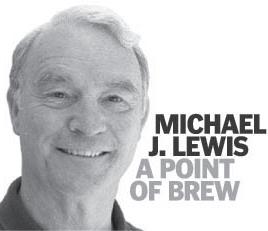
president of Sunrise Rotary, BOD Yolo Cares, Davis Aquatic Masters, IDream, and is the founder of the Davis Aquastarz, synchronized swim team.
She is a very active chair of the USSSA Membership Connections Committee and has served in this role for several years. She is also a past board member of the USSSA. You will find her energizing the room at
most USSSA events, and serving as a hostess as she helps welcome new members of the association to conferences. To find a swim school near you visit https://www.usswim schools.com/find-a-school.
— Do you know of someone who has won an award or accomplished something noteworthy? Email it to newsroom@davisenter prise.net.
B6 THE DAVIS ENTERPRISE WEDNESDAY, DECEMBER 21, 2022
Living
Julie’s Christmas Trifle.
Courtesy photo
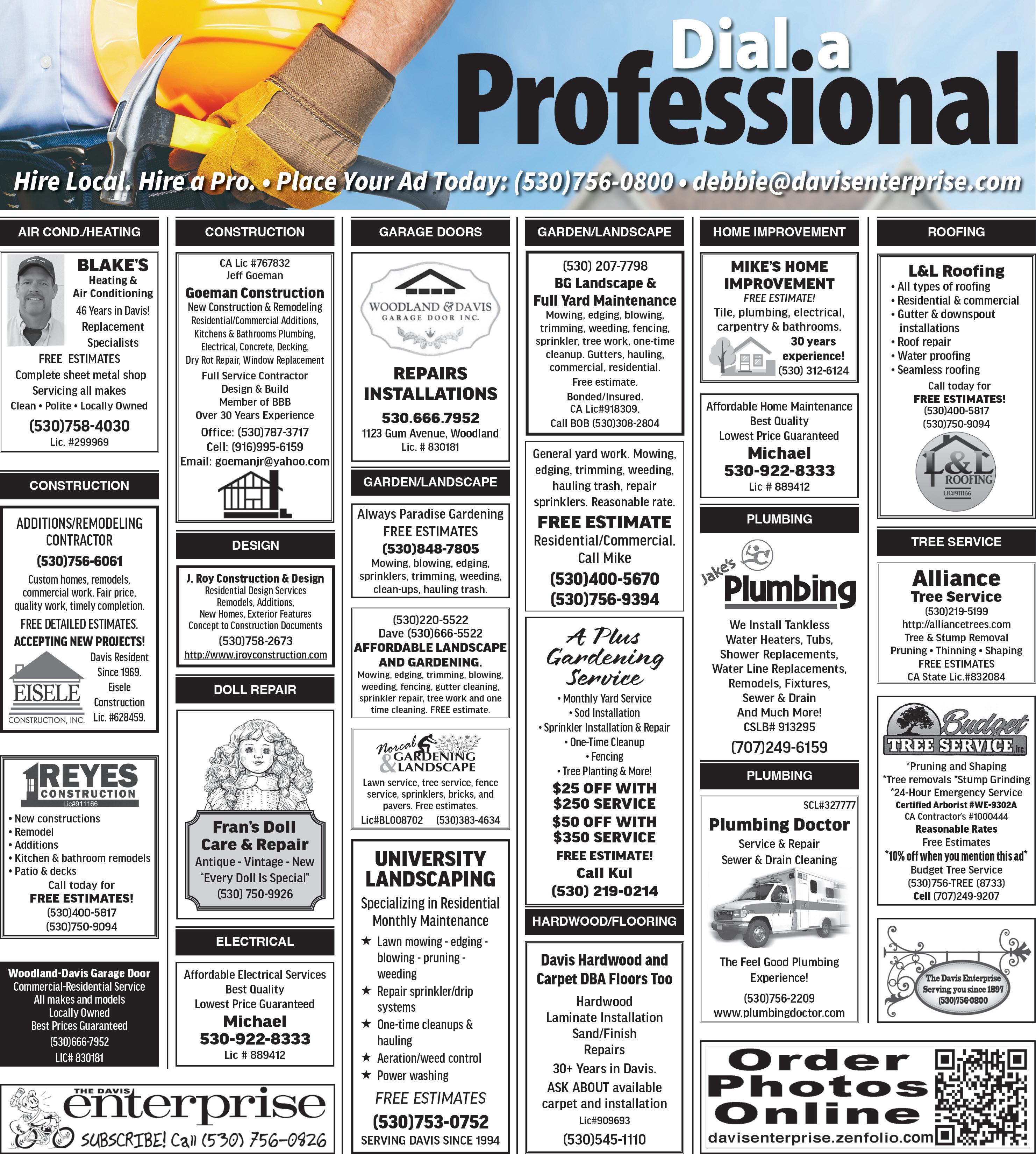
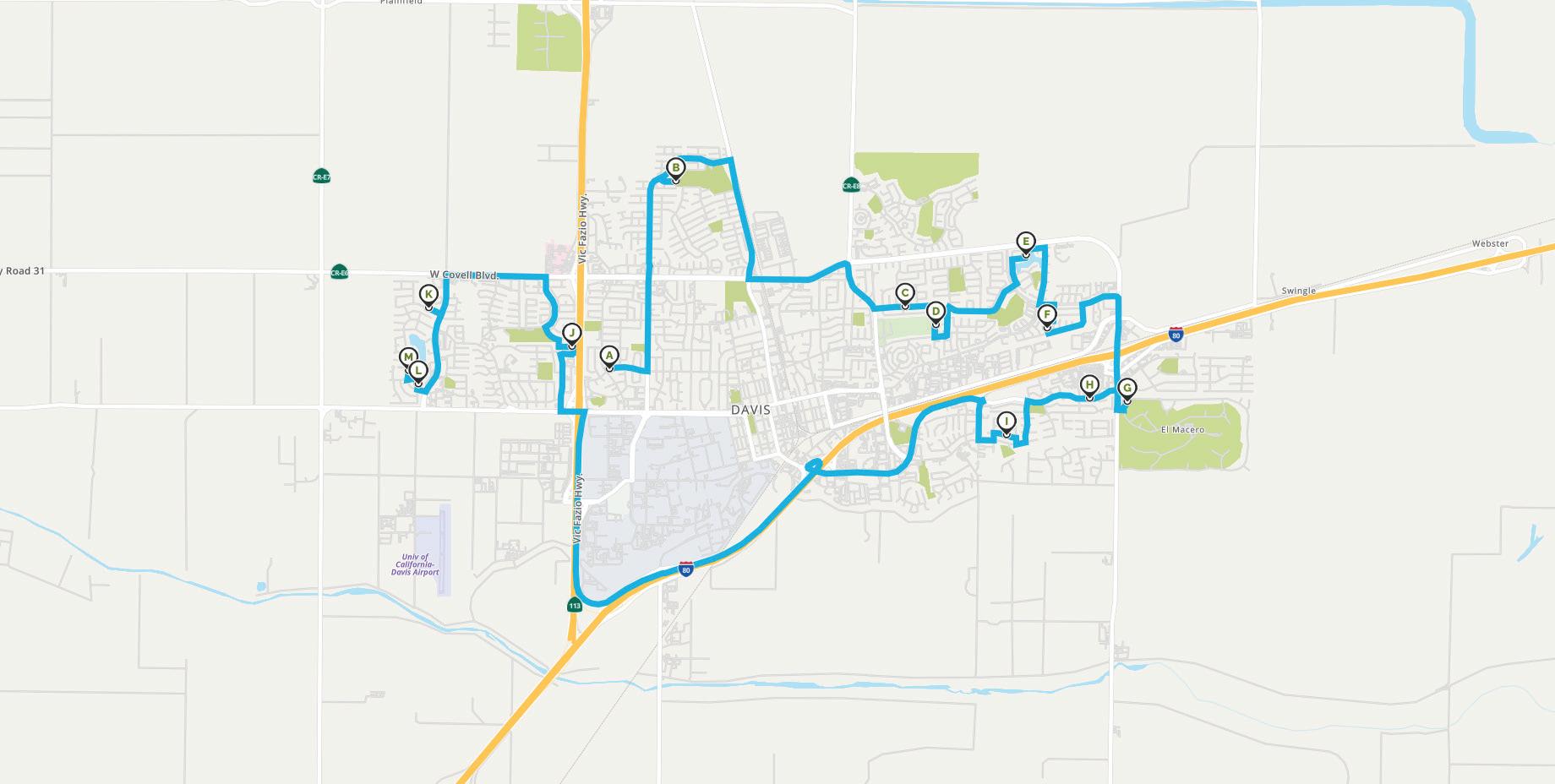


THE DAVIS ENTERPRISE WEDNESDAY, DECEMBER 21, 2022 B7 Local Covell Blvd. Russell Blvd. 5th St. La Rue Blvd. 2ndSt. Loyola Dr. Richards Blvd. F St. Pole Line Rd. Anderson Rd. Sycamore Blvd. Arthur St. ShastaDr. Lake Blvd. 80 ChilesRd. Chiles Rd. Cowell Blvd. Lillard Dr. Drummond Ave. Alhambra Blvd. Mace Blvd. N. El Macero Dr. Mapquest.com map Shawn Collins/Enterprise graphic Want to see them all? Suggested route: https://bit.ly/3BH78tQ A. 1209 W. 8th St. B. 502 Flicker Ave. C. 2300 Loyola Dr. D. 2605 Kalamazoo Pl. E. 3047 Merced Pl. F. 1218 Valerosa Way G. 44081 N. El Macero Dr. H. 4350 Cowell Blvd. I. 3411 Monte Vista Ave. J. 1646 Colusa Ave. K. 3110 Oyster Bay Ave. L. 618 Jerome St. M. 716 Marina Cir. N Holiday Lights 2022 Davis Visit davisenterprise.com/holiday-decorations to view or add your address to our online map. DAVIS
Three players honored
Enterprise staff
Three UC Davis football players were bestowed the honor from Stats Perform.
Ulonzo Gilliam Jr. Nick Amoah and Rex Connors earned the accolade from the website on Tuesday.
All three have been tabbed to at least one AllAmerican list this postseason.
Gilliam Jr. is he only three-time captain in program history was named to the AP second team last week and the HERO Sports All-American squad. The senior was named to the second team at the all-purpose spot after running for 1,180 yards and 13 touchdowns to rank second in the league in yards and third in touchdowns on the ground.
The Merced native also hauled in a team-best 50 passes for 366 yards. His 1,554 all-purpose yards ranked second in the Big Sky. The Stats Perform All-American honor is the second of his career.
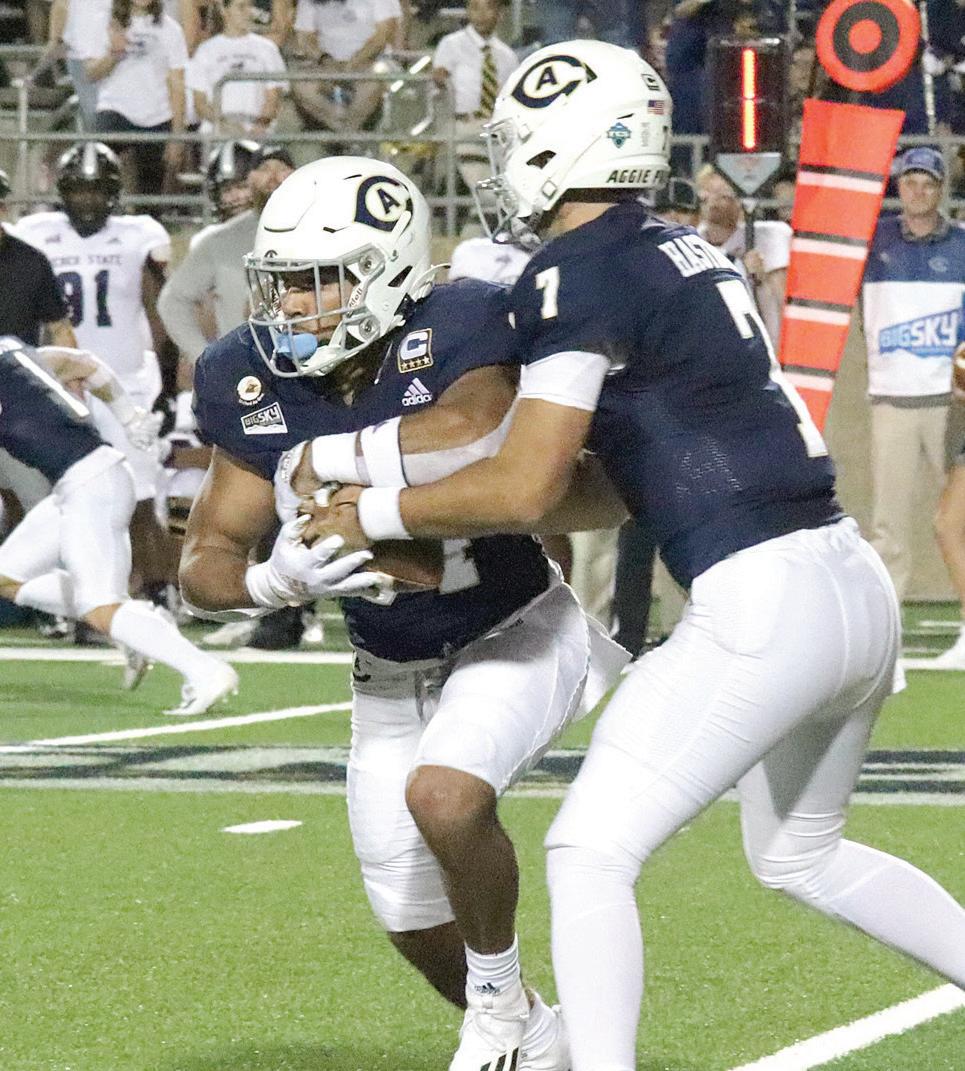
Amoah, who earned his first career All-American honor after being named to the AP FCS list, garners second-team honors from Stats Perform.
The Big Sky Phil Steele Offensive Lineman of the Year is coming off his second first-team All-Big
Sky selection.
Connors picked up Freshman All-America honors for the second time this postseason. The redshirt freshman, also an All-Big Sky first-teamer, proved to be one of the top freshmen in the conference and the entire country as he led the league and was sixth in the country with 0.50 interceptions per game, swiping five passes on the season.
He also led the team with 92 tackles, 56 solo stops and added four tackles for loss. His 9.2 tackles per contest ranked third in the Big Sky, while his 5.7 solo tackles per game paced the league.
UCD: Big West Conference opener at home Dec. 29
From Page B1
The Lumberjacks outscored UCD 30-14 in the final quarter.
Burns finished with 11 points in the game, plus four assists.
Other UCD scorers in the game were forward Tess Sussman with eight points, center Megan Jones five, Harris and forward Megan Norris four each, guard Makaila Sanders three, guard Campbell Gray two and guard Nya Epps one.
Gross feels that the
Aggies time off from the court through Christmas arrived at the right time.
“It’s a long season,” Gross said. “Having a little break will be good for us.”
The Aggies open Big West Conference action, also at the University Credit Union Center, against Hawai’i on Thursday, Dec. 29. Game time is 6 p.m.
— Contact Mike Bush at mike@davisenterprise. net. Follow on Twitter: @MBDavisSports.
the Blue Devils’ alltournament selection.
the quarter.
Ackerman and Coaker finished the game with 11 points each.
Crawford had nine and McCabe eight. Cossu had three while Carpenter and Gentles had two each.
Crawford was named
Davis returns to action in the Fairfield Holiday Classic at Fairfield High. The Blue Devils take on Benicia on Wednesday, Dec. 28 at 8 p.m.
— Follow Rebecca Wasik on Twitter: @BeccaFromTheBay.
Jaquez also has 27 assists, 24 steals and eight blocks.
becomes a rock fight, bloodbath, whatever you want to call it. It’s just hard to get buckets. You have to be hard to score on. We’ve gotten to a point where our guys are embracing that.”
Although longtime basketball observers may still regard UCLA as the premier basketball power of all time, the younger crowd will point out that it’s been 28 years since the Bruins produced a national championship, the first and only title for former head coach Jim Harrick.
UCLA is led by 6-7 senior Jaime Jaquez, Jr., who averages 17.3 points and 6.0 rebounds a game, with 55.3 percent accuracy from the field.
The Aggies, who opened the season with a 75-65 win over Cal, have the Bruins as their final tuneup before starting Big West conference play Dec. 29 at Hawaii.
Elijah Pepper leads UCD with 20.1 points and 6.6 rebounds a game to go along with 34 assists and 14 steals.
T.Y. Johnson, a transfer from Loyola of Chicago, adds 16.5 points and 5.5 rebounds and leads the Aggies with 23 steals.
After Hawaii, UCD returns home for a Big West showdown Jan. 5 against UC Irvine.
— Contact Bob Dunning at bdunning@ davisenterprise.net.

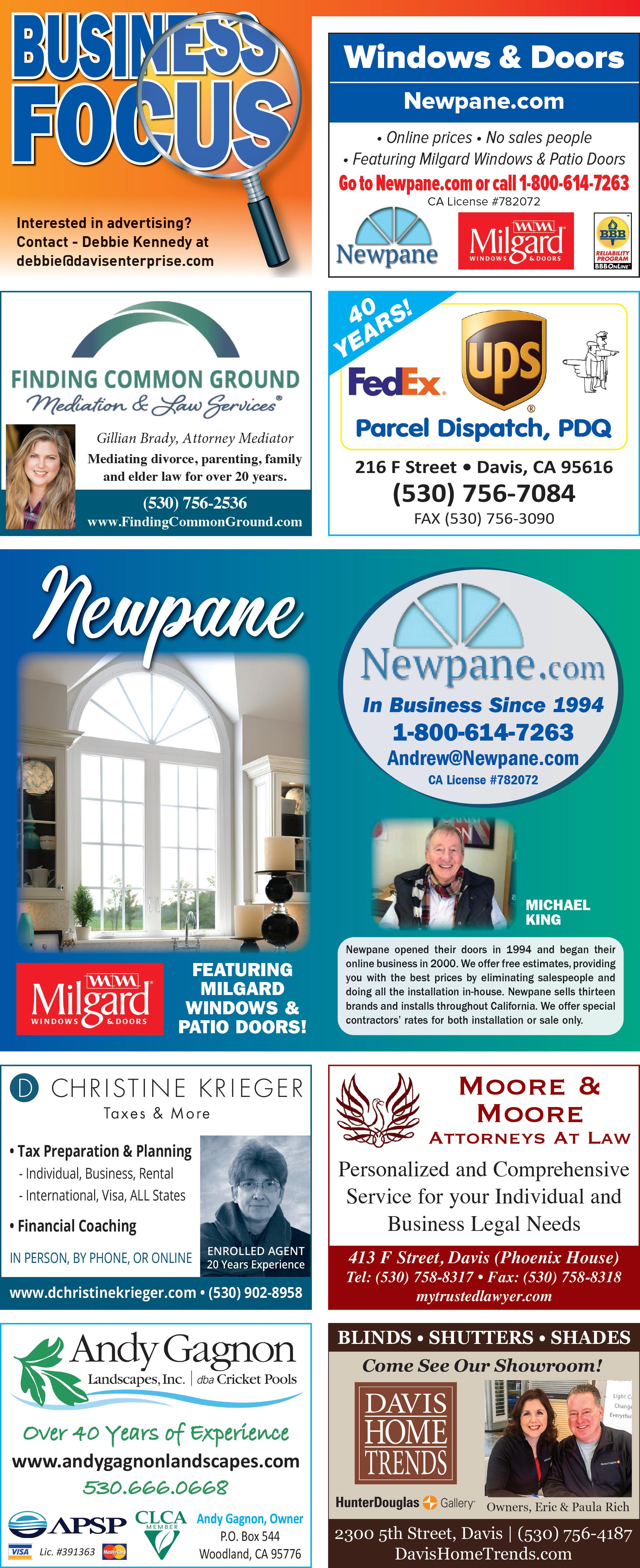
Sports B8 THE DAVIS ENTERPRISE WEDNESDAY, DECEMBER 21, 2022 Aggie roundup
Mike Bush/enterprise file photo
Aggie running back Ulonzo Gilliam Jr. (left) takes the football from quarterback Miles Hastings (7) in a Big Sky Conference against Weber State at UC Davis Health Stadium on Sept. 24.
THIRD: Blue Devils back in tournament action next week
TODAY: Game time is 2 p.m.
From Page B1
From Page B1




 By Anne Ternus-Bellamy Enterprise staff writer
By Anne Ternus-Bellamy Enterprise staff writer






















 By Kathy Keatley Garvey Special to The Enterprise
By Kathy Keatley Garvey Special to The Enterprise






 By Kat Kerlin Special to The Enterprise
By Kat Kerlin Special to The Enterprise





















 Enterprise staff
Enterprise staff







